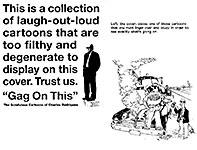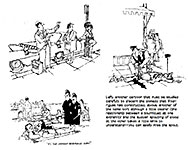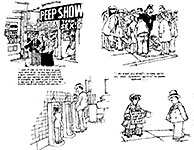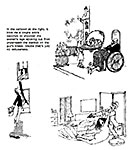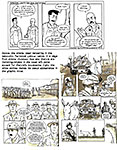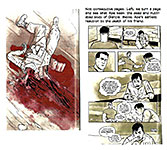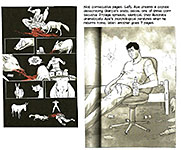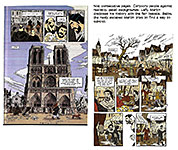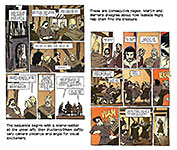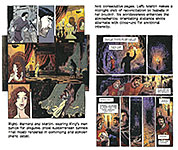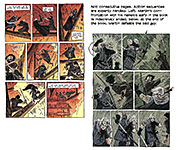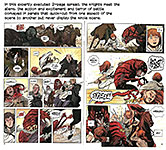 |
||||||||||||||||||||
Opus 357 (September 19, 2016). If you want to catch a rabbit, you hide behind a tree in the wild and make noises like a carrot. Or read this installment of Rancid Raves, where we sample the crop of the month’seditorial cartoons during the Season of Trumpery, review graphic novels The White Donkey (U.S. marines in Afghanistan) and Templar (during the Crusades), plus the new collection of Charles Rodrigues’ cartoons, Gag on This, and Alan Moore’s gigantic Joycean prose novel, Jerusalem, and we look at these comic book first issues: Kill or Be Killed, Lucas Stand, Lady Killer 2, Kingsway West, Control, The Violent, The Fix, Black Monday Murders, and Lake of Fire. And more, much more (including telling excerpts from a Bill Watterson speech in 1991 and porn covers on newsstand comics—well, bookstore stands). This posting, you’ll see, is huge. We just can’t shut up. But that’s what it’s all about, eh? Talking about comics. That’s what we do here. But every time we get ready to post, the Trumpet blasts a new outrage and editoonists leap to their drawingboards, and we have even more to say. So we admit: there’s more here than can be read at a single sitting. We recommend using the contents listed below as a shopping list: scan the items listed and pick those that interest you; then scroll rapidly down to the ones you’ve picked, skipping over boring stuff. Politics and editooning spirals nearly out-of-control this time because of the political conventions and the Prez Election shenanigans; but if you’re not into politics, skip all that and go on to what you like. Here’s what’s here, in order, by department—:
NOUS R US Comics Sales Good New Comics Magazine Facebook Censor Flubs Badly Iranian Cartoonist Wins Courage Award Cartooning An Endangered Species? Moore’s Joycean Novel Just Published Hef’s Playboy Disappoints Again Snarking The New Yorker Odds & Addenda—: March Up for Award Salinger Studio for Student Cartoonists Prez “Cancelled” To Avoid Political Fallout? Who Started the Birther Scam?
FUNNYBOOK FAN FARE Reviews of 1st Issues of—: Kill or Be Killed Lucas Stand Lady Killer 2 Kingsway West Control The Violent The Fix Black Monday Murders
Excerpts from Bill Watterson Speech in 1990
THE FROTH ESTATE News Media Give Trump More Time
EDITOONERY Sampling the Last Month’s Crop of Editorial Cartoons (A Lot of Trumpery)
GOSSIP & GARRULITIES Sandy Eggo Artists Alley in 1991: I Wuz There RANCID RAVES GALLERY Pretty Girl Art Edges Into Porn
NEWSPAPER COMICS PAGE VIGIL News and Taboos in the Funnies
BOOK MARQUEE Short Review of—: Gag On This: The Scrofulous Cartoons of Charles Rodrigues
A-GAGGING WE SHALL GO The New Yorker’s Post-9/11 Cartoon
LONG FORM PAGINATED CARTOON STRIPS Reviews of Graphic Novels—: The White Donkey: Terminal Lance Templar Lake of Fire (1st issue, comic book, related to Templar)
ONWARD, THE SPREADING PUNDITRY A Sterling Big of Reasoning by Leonard Pitts, Jr.
QUOTE OF THE MONTH If Not of A Lifetime “Goddamn it, you’ve got to be kind.”—Kurt Vonnegut
Our Motto: It takes all kinds. Live and let live. Wear glasses if you need ’em. But it’s hard to live by this axiom in the Age of Tea Baggers, so we’ve added another motto:. Seven days without comics makes one weak. (You can’t have too many mottos.)
And our customary reminder: don’t forget to activate the “Bathroom Button” by clicking on the “print friendly version” so you can print off a copy of just this installment for reading later, at your leisure while enthroned. Without further adieu, then, here we go—:
NOUS R US Some of All the News That Gives Us Fits
COMICS SALES LOOK GOOD SO FAR THIS YEAR Heidi MacDonald at publishersweekly.com reports that after a year of slipping sales and smaller lines, the comics industry was in a more upbeat mood at the 2016 Diamond Retailer Summit, held August 31-September2 in Baltimore by Diamond Comic Distributors, the main distributor for periodical comics and traditional comics publishers. ... While sales have yet to fully recover from a shaky start this year— overall sales are down 2.2%— graphic novels are up 2.4%. Additionally, Diamond’s customer count is up 3.6%. Periodical comics are down 2.6%, and merchandise down 1.6%. However, at a breakfast presentation, Diamond reps announced that sales had picked up over the summer, and by year's end they expect sales to stabilize. The growth in graphic novels was remarked on by nearly every publisher. Mainstream authors Chuck Palahniuk and Margaret Atwood have had success at Dark Horse, said editor in chief Dave Marshall, at a state-of-the-industry panel. “More and more of our readers are preferring the collected [book] format.” ... Much of this summer’s surge in sales is due to DC’s Rebirth event, a moderate revamp of its superhero comics line, which launched in April and has shipped over 12 million returnable units since then. The sales velocity of Rebirth has been even bigger than 2011’s New 52 (an earlier DC superhero revamp), with Rebirth showing a 76% rise in sales compared to New 52’s 47% rise. DC hopes to continue the upswing with a Justice League vs Suicide Squad event—DC’s iconic superhero team battles DC’s bad-guys turned good-guys team—early in 2017, announced by co-publishers Dan DiDio and Jim Lee. At Marvel, retail channels outside the direct market (local comic book stores) have had an impact, including Scholastic Book Fairs, where lighthearted Marvel characters such as Moon Girl and Devil Dinosaur and The Unbeatable Squirrel Girl are sold. Marvel senior v-p of marketing and sales David Gabriel said Marvel is having its best year since he started at the company 14 years ago. The new Black Panther series by Ta-Nehisi Coates has also expanded the diversity of Marvel’s line, as well. Other publishers saw a similarly rosy horizon.
A NEW COMICS MAGAZINE Image has a new
scheme afoot. For three months, Image has produced a magazine, Image+, which
offers interviews with funnybook writers and artists and generous samplings of
the pages they have written and drawn. While it is an obvious promotional
effort (only Image comics creators are interviewed and their work sampled), it
is also engaging in its own right and nicely informative as even promotional
publications can be. Initially distributed free to subscribers It’s not clear whether, as a Previews subscriber, I’ll continue to get a copy free with my catalog, but I have hope. One of the magazine’s treats is the clever inside front cover comic strip, Comic Lovers, by Brandon Graham, who gently spoofs comics artistry and criticism as he exemplifies both; a sample appears at the corner of your eye.
FACEBOOK CENSOR FLUBS BADLY From Maren Williams’ report at CBLDF—: In the face of international condemnation and ridicule, Facebook reversed course recently after initially blocking one of the most famous war photographs of all time because it includes a nude minor. Taken by photographer Nick Ut, the Pulitzer Prize-winning photo titled “The Terror of War” shows nine-year-old Kim Phuc, along with other South Vietnamese children and soldiers, fleeing a friendly-fire napalm attack in 1972. Phuc sustained severe burns across her back, and the searing image helped to turn U.S. sentiment against the war, contributing to the ceasefire six months later. The 44-year-old photo came to Facebook’s attention last week when Norwegian writer Tom Egeland included it in a post about “seven photographs that changed the history of warfare.” Egeland’s account was subsequently suspended, prompting the newspaper Aftenposten to cover the story and use the same photo as a preview image on Facebook. The newspaper in turn received a moderation notice asking that it “either remove or pixelize” the photo, but the post was deleted by Facebook before Aftenposten staff could take action. Later, Facebook, face red, restored the iconic photo and its various encumbrances.
IRANIAN CARTOONIST WINS COURAGE AWARD News Release from CRNI Joel Pett, President of the Board of Directors of Cartoonists Rights Network International, announced the recipient of the Award for Courage in Editorial Cartooning for 2016. Every year, CRNI searches the world of political cartooning for those who have demonstrated exceptional courage and resilience in the face of life-threatening risk and danger. Political cartoonists are often the first journalists to be attacked for their irreverent and satirical commentary against tyrants and terrorists alike. Because their cartoons are so immediately comprehensible, they often have more power and influence over public opinion than other media, particularly in countries where literacy is not widespread. In such countries, cartoonists’ pictorial reportage tells the tale. And if the country is run by a dictatorship, that entity doesn’t like the cartoons or the cartoonist. This year’s recipient, whose pen name is Eaten Fish, is an Iranian national, currently interned in the Manus Island detention camp in Papua New Guinea. This notorious detention center is funded and overseen by the government of Australia. Various human rights groups have spoken out against the Manus Island camp, with the UN recognizing that indefinite detention and the practices employed in the camp constitute “cruel, inhuman and degrading punishment” and break the UN Convention Against Torture to which Australia is a signatory. Eaten Fish has been able to keep up a stream of cartoons documenting the unspeakable abuses and excesses of the guards and administrators of the camp. For this he has been the subject of beatings, deprivation of food, and even worse degrading treatment by the guards. Australia has made publication of negative information about the camp punishable by two years in prison. The importance of the work of human rights defenders, artists, cartoonists and writers, such as Eaten Fish, within the prison camp cannot be overstated. Nor can the fact that they are at further risk of violence each time they create, speak, draw or write. Eaten Fish is one of those who’s work as a cartoonist brings to light the horrors that are happening around him. CRNI believes that his body of work will be recognized as some of the most important in documenting and communicating the human rights abuses and excruciating agony of daily life in this notorious and illegal prison camp. His work pushes through the veil of secrecy and silence and layers of fences in a way that only a talented artist speaking from the inside can. We hope that this award will help shine a brighter light on the excesses of this camp. His work is addressed to the critical eyes of the world while exposing the xenophobic and racist policies of the Australian government in their dealings with immigrant refugees. The award will be presented in absentia and accepted by Janet Galbriath, an Australian poet and human rights worker, and founder of Writing Through Fences. Galbraith has made it her business to uncover the excesses of the Australian government’s policies in the Manus Island camp, The award will be presented at the final dinner of the annual convention of the Association of American Editorial Cartoonists in Durham, North Carolina on September 24, 2016.
CARTOONING AN ENDANGERED SPECIES? Editorial cartooning has been in trouble for years. In May 2008, 101 editoonists worked full-time on the staffs of American daily newspapers. That number is now 50. The erosion of this profession has been attributed to the plight of the newspaper itself. Newspapers aren’t making as much money for their stockholders as they once did—and the possibility of expanding paid circulation in the age of the free Internet is remote, foreclosing the option of increasing revenue. The remaining balance sheet choice is to reduce expenses, which means, mostly, cutting staff, and editoonists are the supposed luxury and therefore go first. But some attribute the slow death of editooning to other causes. Timidity. Ted Rall calls it “corporate slacktivism,” an aversion to rocking the boat with satire. Editoonist Clay Jones, quoted (like Rall) by Jaime Lopez at news.co.cr, agrees: “I do feel that newspapers are afraid. To be honest, most editors don’t know a good cartoon when they see it. They love obituary cartoons. They love the most obvious. The laziest cartoonists draw the same old cliches of sinking ships, candidates as Pinocchios, people going over the edge and so on. And those cartoons get a lot of reprints. Check out USA Today every Friday. Most newspapers reprint cartoons and don’t have a staff cartoonist.” Freelance cartoonist Dean Haspiel, not an editoonist but still looking to sell cartoons for publication, gave the keynote at the Harvey Awards ceremony at the Baltimore Comicon. Speaking about the once vibrant New York City scene for freelancers, he remembered basement “night clubs” and second floor venues where people went for entertainment. No more. “Who goes anywhere anymore when everyone is glued to their smart phone and tablet?” And for the freelance cartoonist looking for publication outlets, “it’s hard to compete for an audience that can’t extricate themselves from the Internet for a couple hours to experience something live and direct with carbon dioxide. Our surveillance society has created attention-deficit-disorder zombies. The ‘scene’ got taken hostage by the screen.”
COMICS GURU ALAN MOORE PRODUCES JOYCEAN NOVEL Nobirdy Avair Soar Anywing to Eagle It With the publication last month of his extravagantly long and complex prose novel, Jerusalem, Alan Moore announced that he is planning to retire from the other medium in which he has worked for so long, the one that brought him fame—comic books. But not, it seems, right away. The creator of such medium-altering works as Watchmen, V for Vendetta, From Hell, The Killiong Joke and The League of Extraordinary Gentleman said, at a press conference about Jerusalem, “I have about 250 pages of comics left in me,” and he may produce them in Cinema Purgatorio and Providence from Avatar, and the final book of League of Extraordinary Gentlemen. That, however, would fall short of his life-long goal, “to do a large work on a large scale.” He plans to keep working, but to focus on films and literary novels, still aiming at that large opus. Jerusalem, a nearly 1,300-page work of words with no pictures, presumably is a milestone on his road to that goal. It took Moore ten years to complete. Andrew Ervin, an author and critic writing in the Washington Post, says Jerusalem “is epic in scope and phantasmagoric to its briny core. It takes place over 1,000 years in the English town of Northampton [Moore’s hometown], also known here as the Boroughs. It’s a hardscrabble realm teeming with painters and prostitutes, would-be poets and biblical demons. The angels play snooker with the eternal souls of the residents on the line.” Moore would agree; he says the book celebrates the city’s “long tradition as a haven for religious firebrands, insurrectionists and the plain old mad.” David Franich at ew.com waxes large in his approval of the book: “Here it is, the big-swingiest of literary big swings: A Very Long Book About Very Nearly Everything. In Alan Moore’s Jerusalem, witness the span of a human life, the lifespan of humanity, and the four-dimensional space-time architecture of life after life. And, in Jerusalem, witness all that cosmic scope, filtered through the dust-mite microcosm of a single neighborhood in a single city.” “Jerusalem,” Ervin continues, “ revels in the idea of eternalism, the theory that past, present and future exist all at once. Everything that has ever happened in Northampton is still happening. Everything that eventually will happen there is already happening now. Amid that chronological and ontological maelstrom, Moore’s characters must reckon with the occasional slippage between their town and a shadowy parallel realm known as Mansoul. From Mansoul, the deceased can watch all of the goings-on in the town.” The book is obviously, self-consciously, Joycean (perhaps as homage and, in some places, as parody). “Yes, yes, very much,” burbles Franich. “Many of Jerusalem’s chapters follow the life-in-a-day structure of [James Joyce’s famous] Ulysses, with characters thoughtfully perambulating around a few square blocks in Northampton. Then you get to the part when Joyce’s daughter Lucia has a sexual encounter with pop idol Dusty Springfield— said encounter witnessed by actor Patrick McGoohan and the balloon-monster from McGoohan’s TV show “The Prisoner.” ... Did I mention that whole chapter is written in the style of Joyce’s infamously post-coherent masterpiece Finnegans goddamn Wake??? Sample line, pulled from the middle of a random sentence: “... Lucia askplains dashy’s expictured beckett d’main how’s o’ the massylum in spacetime for tea an’ dusks her newd frond four dimections to delaytr roaches of the ninespleen severties… Hence the subtitle of this article, ripped from Finnegans Wake. “The novel doesn’t have a through-line plot arc any more than do Hieronymus Bosch’s hell-scapes,” said Ervin. “But we learn a great deal about the Vernal and Warren families,” the chief characters (other than the town itself) of the book. Another Joycean kinship. “Moore’s own prose is always lively and rarely orthodox,” said Ervin. “He can evoke mirth and dread in equal measure. His similes want to leap from their pages. A lackluster intimate encounter ends ‘like an old tea towel that had been wrung out time after time until the pattern on it disappeared.’ “The prose sparkles at every turn, but that’s not to say it’s without flaws. Some entire chapters, particularly in the middle Mansoul section, struck me as wholly soporific. Moore also demonstrates an affinity for overwriting. I was hard-pressed to find many nouns that did not arrive man-splained with an unnecessary adjective. Here’s a typical sentence: ‘The big square bathroom with its plaster-rounded corners is a blunted cube of grey steam rising from the eight-foot chasm of the filling tub, an ostentatious lifeboat made from the tide-lined fibreglass.’ “That maximalist, kitchen-sink approach accounts for many of its pleasures,” Ervin conclude: “There are unexpected twists and frequent hairpin changes in mood. What makes it truly shine, however, is its insistence that our workaday world might not be quite as mundane as we think. Lurking in the corners of the ceiling, we might just find a portal to a different realm. The imagination Moore displays here and the countless joys and surprises he evokes make Jerusalem a massive literary achievement for our time — and maybe for all times simultaneously.” Well, that may be a bit much. A bit too Joycean perhaps.
MOORE HIMSELF,
in an interview with the New York Times, sees the book as filling “a
need for an alternative way of looking at life and death. I have a lot of very
dear rationalist, atheist friends who accept that having a higher belief system
is good for you — you probably live longer if you have one. You’re probably
happier. So I wanted to come up with a secular theory of the afterlife. As far
as I can see, and as far as Einstein could see, what I describe in the book
looks like a fairly safe option in terms of its actual possibility.” The interview ranged across a wide spectrum of subjects, including the present state of the world and democracies in it. Given Moore’s frequent forays into fictional dystopias, his interviewer asked if he felt like we’re further down the path to dystopia now than when he wrote, f’instance, V for Vendetta in the 1980s. “I wouldn’t say that,” Moore responded. “The world inexorably gets more and more complex. Against that complexity you’re going to get things like fascism and extreme religious fundamentalism. You’re going to get that. In an increasingly complex world all of those people feel that they’re losing ground. Extreme nationalism: this is a reaction to the fact that the very concept of a nation is being eroded.” This development accounts for Brexit in England and Trumpism in the U.S. “Wildly misguided protests,” Moore said. “This is what democracy looks like now.” At 62, Moore is on the very short list of people responsible for why mainstream audiences—and corporations—treat superheroes as very serious stuff, mused his interviewer. So what does he think of comics these days? Comics these days—that is superhero comics—aren’t aimed at 12-year-old children anymore. “The average comics reader these days is probably in their 30s, their 40s, their 50s,” Moore said. And that’s “slightly unhealthy.” He continued: “People have been saying since the mid-'80s that ‘comics have grown up.’ I don’t think that’s factually true. I think what happened was that there have been a couple of comics that seemed to be reaching for a more mature readership, and that has coincided with the emotional age of the mass audience coming the other way.” And he agreed with his interrogator’s saying: “So the success of superheroes movies, for example, has less to do with the characters proving that they can be narratively interesting or embodying popular ideas about the culture and more to do with audiences getting increasingly immature?” More went on in a slightly different direction: “The fact that I spent so long in comics was a surprise. Economics was a big part of that, and also things just have a momentum of their own. But my true background is in experimental art, and I was interested in almost everything. I wanted to do some songwriting and I wanted to do some performance, and I have done all those things. I feel genuinely excited about where I’m at now. That’s not how I feel about comics.” But Moore left the door open to some future comics work on a limited basis after finishing the 250 pages he has left:. “After that, although I may do the odd little comics piece at some point in the future, I am pretty much done with comics,” he said.
THE LATEST DISAPPOINTMENT FROM HEF The latest
non-nude Playboy is out, and it again has a full-page unabashed cartoon
by Nick Gurewitch, his second As for the nefarious “no nudes” policy—not so. The wimmin are naked, but we see no full frontal nudity. A lot of coyly draped nudity, though—with lots of naked butts, Playboy’s new obsession. But no nipples. No pudenda. No, no, no no.
SNARKING THE NEW YORKER The September
12 issue of The New Yorker has another of those covers drawn with a
compass by Ivan Brunetti. I
did a cover employing something of the same contrivance back in 1957 for a
homecoming football game program when I was in college. I’m not saying my cover is superior to Brunetti’s. He has more people in his scene than I have in mine. But there was a kindred attempt to give all those people something individual to do. This issue of The New Yorker also advertises The New Yorker Festival, 3 days of seminars and speeches around the City by notable personages on current affairs and comedy, October 7-9, Friday through Sunday. The event is not free, but the magazine, fatuously impressed, no doubt, by its own presumed cultural and social grandeur, does not deign to tell us in the 4 pages of advertising what the tickets cost. Smug self-importance galore. Real New Yorker readers are not to be bothered by such mundane matters. To discover this vital $crap of information, you must hie thee to the Web, where, at newyorker.com/festival, you learn what attendance will cost you—$45 on Friday, $50 on Saturday, and $55 on Sunday. But you have to have a computer with Internet access to learn this. And as everyone knows—everyone at The New Yorker—only people well-to-do enough to own a computer are readers of The New Yorker.
ODDS & ADDENDA Representative John Lewis is among the 10 authors on the “longlist” for the National Book Award for Young People’s Literature, the National Book Foundation announced. Lewis’s recognized work is his civil-rights memoir March: Book Three, the final installment in his graphic-novel trilogy that has his 1965 Selma March as its dramatic centerpiece. The powerful March trilogy — co-authored by Andrew Aydin and illustrated by Nate Powell — continues to attract a raft of honors, from the RFK Book Award to the Eisner Award in July. ■ The former New Hampshire home of the famously reclusive author J.D. Salinger was bought recently by Harry Bliss, a New Yorker cartoonist and former board member at the Centre for Cartoon Studies. The house is adjoined by a studio apartment (reached through a tunnel from the main property that enabled Salinger to go back and forth without being seen) which Bliss thought might be a good space to have young artists come and use whilst studying at the Centre, presumably. “The idea of nurturing a graphic novelist – I’m so into it,” Bliss said, “—this idea that you could go somewhere and be away from everything and have that intimacy with your work.” ■ The satirical comic book Prez, about the first woman teenage president of the U.S. was supposed to return in October with six more issues that would complete the 12-issue series. But those issues have been cancelled, ICv2 reports. Instead, a 12-page Prez Election Special will arrive in some form in November. No official reason was offered for the change, and perhaps poor sales had some influence, but Steve Bennett (Confessions of a Comic Book Guy) speculates that “given the nearly hysterical political mood of the country as we move ever closer to this year’s presidential election, you can’t discount the possibility that Time Warner just didn’t want to seem to take any sort of political stance (especially with so many people busy online comparing one of the current candidates to former President Lex Luthor).” No official announcement about where, exactly, the Election Special will be published. Apparently at DC Comics, George S. Kaufman’s famous saying “Satire closes on Saturday night” is as accurate ever.
WHO STARTED THE BIRTHER SCAM? I know: this is supposed to be about news in comics and cartooning. But the Trumpet is such a big success as a cartoon figure that I thought this disquisition belonged here. Donat Rump held a news conference on Friday, September 16, at which he conceded that Prez Obama had been born in the U.S. after all. Then, as is his custom, he looked around for someone else to blame for his bad judgement in starting the whole birther business, saying: “Hillary Clinton and her campaign of 2008 started the birther controversy. I finished it. I finished it, you know what I mean?” It was a patently false claim for which he had absolutely no evidence. But it’s not the first time the Trumpet has accused Hillary of being first to raise questions about Obama’s birthplace, an assertion that has been repeatedly disproved by fact-checkers who have found no evidence that Clinton or her campaign questioned Obama’s birth certificate or his citizenship. Despite this “fact,” Trumpkins stoutly maintain (one did to me on Friday night over a beer) that fact-checkers proved just the reverse, that Clinton started it. So I looked it up. Here’s the story from ABC News: The Trumpet’s campaign has circulated a link to a memo written by Clinton’s 2008 chief strategist, Mark Penn, suggesting they promote then Senator Obama’s “lack of American roots,” as well as the transcript of an interview Clinton’s 2008 campaign manager Patty Solis Doyle, where she tells Wolf Blitzer a staffer forwarded an email promoting the birther conspiracy in 2007, but that staffer was immediately fired. Penn did write a memo in 2007 saying that Obama’s foreign experience growing up could present a weakness for him, and Clinton should emphasize her middle-class Midwestern upbringing. "His roots to American values and culture are at best limited," the memo says. "I cannot imagine America electing a president during a time of war who is not at his center fundamentally American in his thinking and values." But it does not say that Obama was foreign-born. No evidence has been uncovered to link the idea of birtherism to the Clinton campaign. In 2015, Clinton told Don Lemon the claims that she and her campaign started the Obama birther attacks were "ludicrous and untrue." But there have been several reports linking the first major instance of floating the theory to Clinton's supporters. In 2008, the fact-checking website Factcheck.org said the idea of “birtherism” could originally be traced to Clinton’s diehard supporters, as it became clear she was going to lose the nomination. This was supported by reporting from other outlets, including the Telegraph, and Politico. But Clinton’s supporters aren’t the same thing as Clinton’s campaign. “There is no record that Clinton herself or anyone within her campaign ever advanced the charge that Obama was not born in the United States,” Politifact, another fact checking website, wrote last September following Trump’s tweet that Clinton started the birther movement and was "all in" on the movement. So there.
Fascinating Footnit. Much of the news retailed in the foregoing segment is culled from articles eventually indexed at rpi.edu/~bulloj/comxbib.html, the Comics Research Bibliography, maintained by Michael Rhode and John Bullough, which covers comic books, comic strips, animation, caricature, cartoons, bandes dessinees and related topics. It also provides links to numerous other sites that delve deeply into cartooning topics. For even more comics news, consult these four other sites: Mark Evanier’s povonline.com, Alan Gardner’s DailyCartoonist.com, Tom Spurgeon’s comicsreporter.com, and Michael Cavna at voices.washingtonpost.com./comic-riffs . For delving into the history of our beloved medium, you can’t go wrong by visiting Allan Holtz’s strippersguide.blogspot.com, where Allan regularly posts rare findings from his forays into the vast reaches of newspaper microfilm files hither and yon.
FURTHER ADO There will be prayer in public schools as long as there are math tests.—Anonymous
FUNNYBOOK FAN FARE Four-color Frolics An admirable first issue must, above all else, contain such matter as will compel a reader to buy the second issue. At the same time, while provoking curiosity through mysteriousness, a good first issue must avoid being so mysterious as to be cryptic or incomprehensible. And, thirdly, it should introduce the title’s principals, preferably in a way that makes us care about them. Fourth, a first issue should include a complete “episode”—that is, something should happen, a crisis of some kind, which is resolved by the end of the issue, without, at the same time, detracting from the cliffhanger aspect of the effort that will compel us to buy the next issue. A completed episode displays decisive action or attitude, telling us that the book’s creators can manage their medium.
ED BRUBAKER and Sean Phillips are back with a new crime/horror series, Kill or Be Killed. In the opening sequence, Dylan, the 28-year-old grad student “hero” of the series, is wearing a black hoodie and a red face mask and he kills five people. He shoots four with a shotgun, then beats the fifth to death with the weapon. These are “bad people” he tells us in the running first person narrative captions: they deserve to die. The remainder of the book is devoted to his telling us how “it all started.” We see him being bullied while with his girlfriend, but, no, he says, it really started when he tried to kill himself by jumping off a building. And that happened because of his relationship with his “best friend,” Kira, who was dating his roommate, Mason. She started kissing Dylan whenever Mason was out of the room, and Dylan realized he loved her. And then he heard her in the next bedroom with Mason saying she felt sorry for him. So he jumped off the building. Fortunately, he got caught in laundry lines between buildings: they broke his fall, and he landed in a snow drift, not badly damaged. But he was now seriously disoriented. He resolves to tell Kira he loves her “in the morning,” but during the night, he’s visited by a “demon”—a fuzzy-looking, horned black blob with glowing eyes and gritted teeth—who tells Dylan that he owes him “a life for a life” as payment for his “second chance” at life. He tells Dylan that he must kill “bad” people, one a month. Dylan thinks the demon is some sort of bad dream or hallucination, so he rejects the demon’s command, and the demon breaks his arm. Kira takes Dylan to the hospital to get his arm attended to, but instead of telling her then of his secret love, he remains silent. And that’s the end of the book’s completed episode. We learn that Dylan is a quiet guy with good impulses but is otherwise disturbed. Dylan gets the flu or some other fever-inducing ailment and is haunted by visions of his delusional demon. After a couple days, he decides to go to the emergency room to get treated. On the way, he’s assaulted by two ruffians who beat him and leave him lying in the snow. That’s when Dylan decides he’ll d the Demon’s bidding: he’ll “find someone who deserves to die and kill them. How hard could that be?” So now we know how Dylan became a hooded masked killer. Next, we’ll learn how he finds bad people to kill. At Image+, in previewing the title in No.2, the editors gave away the story when they said: “Kill or Be Killed is the story of ayoung man who is forced to kill bad people, and how he struggles to keep his secret as it slowly ruins his life and the lives of his friends and loved ones.” In the same issue, Brubaker says the series is “our take on the vigilante killer genre, which I hope means it’s not what people usually expect when they think of that. ... The basic idea is like a stone thrown into a pond—what happens to this guy when he starts putting on a mask and killing people? And from that, there are just so many ripples to explore and story alleys to go down.” He says he “missed the open-ended, always upping the stakes kind of storytelling. ... A kind of ‘Oh shit, what happens next?’ type of story, and I missed that vibe. But I wanted to find a way to do it that was different, that was not a story about a hero, but kind of twisted examination of the entire idea of what it means to be a vigilante instead.” Phillips’ rendering of the story is, as usual, superb. He is always good, but I think he’s getting even better. And Brubaker lets Phillips’ pictures tell a fair share of the story. In the confrontation sequence with the demon, Phllips alternates full-figure shots for orientation with close-ups of Dylan that emphasize his emotional reaction. Much of the story is heavily shadowed: it takes place at night. Phillips does some great night scenes in the streets of New York as the snow is falling—spectacular. But the pictures are always subordinate to the story—providing atmosphere, of course, but never failing to supply necessary narrative detail.
In the Image+ interview, Phillips said: “I never look forward to drawing any of it. Every new script just seems to be a lot of impossible things to draw. Once I get started though, it seems just difficult. I never know anything further ahead than the script I’ve got, so I’ve got nothing to look forward to drawing. I’m as excited with Kill or Be Killed as I am with everythning else I do with Ed and Bettie. We do our best work together, and it’s enough that we get to carry on doing that.” And colorist Elizabeth Breitweiser has leavened the visual narrative with nuanced shades and hues of color to model faces and other subtle aspects of the story. She’s deliberately avoiding the “glitz and glamour” of Fade Out, the team’s most recent project. She’s trying “moodier palettes and a gritty textured rendering style.” Said she: “I plan to do a lot of fun things with color psychology. ... My approach changes depending on what kind of tone Ed and Sean are setting, and I try to follow their lead as best I can. ... These two make me feel very much appreciated and like an integral part of the team.” Excellent stuff, all around. Even if I don’t care much for spooks and other worldly critters.
IN LUCAS STAND No.1, we have another story about a man who kills himself and is given a fiendish second chance. The title character is a big man with a bad temper. He spent twelve years as a Marine in “the sandbox” (Afghanistan), which ended when the Taliban “pumped six AK rounds into his spine.” They said he wouldn’t walk again, but he did—albeit in great pain. And he took drugs and poured alcohol down his throat to alleviate the pain. We meet him on the day he slugs his supervisor and loses his security gig. Driving home in a drunken rage, he inadvertently forces another car off the shelf road they’re on, and a family of four dies. Once home, he takes a pistol and shoots himself in the mouth. But he doesn’t die. Seemingly. He’s visited by a tough-talking Marine drill instructor named Gadrel who offers Lucas a deal: he can make things “right” by accepting an assignment on an unspecified “mission.” Assaulted by his demon landlord, Lucas accepts—and is immediately transported to another time and place, Nazi occupied France, where he finds himself in the Resistance. But he’s captured by the Gestapo, and he encounters some fiend-like corporalities. In prison, Gardel shows up again. And when Lucas demands a briefing on what is going on, Gardel turns himself into the devil or a good imitation thereof. And that’s where the issue ends. Three
or four completed episodes show that co-writers Kurt Sutter and Caitlin
Kittredge know what they’re doing. And Lucas is continually portrayed as a
bad-tempered bully. We pity his situation—a pain-filled life as a Jesus Hervas’ rendering of the tale is expert. His style is muscular but not heavy-handed: lines are flexible without being bold. And the pictures assume much of the storytelling role. In short, an expertly done comic book. I probably won’t get subsequent issues, but that’s because I’m not a fan of fiendish tales. On the other hand, the storytelling might pull me back.
JOELLE JONES is back with the promised sequel, Lady Killer 2. In the first issue, our heroine, professional assassin Josie, kills three people without explanation. All are “bad” people—two rude spinsterish hags, and a sexual predator of a car salesman. In some way, they all “deserve” to die in that easy quid pro quo world of funnybook morality. After killing her prey, Josie cuts them up into small pieces to dispose of them. If we hadn’t read the previous series of Josie’s adventures, we wouldn’t know that she’s likely “on assignment” in these killings. Otherwise, they would seem to be nearly motiveless murders—except for the bad manners all the victims exhibit, making them deserving of their executions. All
the killing is accomplished in the bloodiest ways possible—with a claw hammer
and a knife— and Josie spends a lot of this issue covered with spurts of blood.
And the gruesome dismembering of her victims is likewise gory. The two killing sequences—both complete episodes—are narrated by Josie, who prattles on about the requirements of her “job.” Her dispassionate, matter-of-fact business-like tone diffuses the goriness a little. But it is chiefly visual rhetoric that persuades us she’s probably a good person despite all the blood and gore: her prim demeanor and pretty face and figure are convincing—no woman who looks like this could be so bloody a killer. But she is, of course, and that circumstance creates the narrative tension that propels the tale forward. Two other complete episodes provide grace notes. In one, a six-page sequence, we meet Josie’s husband and child at a backyard dinner they’re throwing to entertain her husband’s boss (another example of male predation, he flirts with Josie). The device of the first-person narrator disappears here, so the picture that emerges is ostensibly the true picture always (ostensibly) provided by an omniscient narrator. Josie displays the perfect poise of a hostess, despite the suggestive drooling of her husband’s boss (and the nasty temper of her mother-in-law). In the other episode, a brief two-pager in a parking lot, Josie finds a note on her car’s windshield: “Sorry we missed you. We will call again.” To those of us who’ve met Josie in her previous performance the note suggests that she is acting on assignment. Writer as well as artist, Jones proves, again, an adept master of the medium. Her pictorial presentation of Josie as a polite pretty woman is flawlessly convincing; likewise, the scenes of murder and dismemberment, incongruous with Josie’s prim appearance. Jones blends words and pictures deftly throughout. In the killing and body disposal scenes, her first person narrative diffuses the blood and gore of her actions in pictures, verbal and visual combining dispassionately, almost clinically. And often, pictures do the storytelling: the wordless parking lot sequence ends with a road sign that tells us we’re in Cocoa Beach, Florida; and the last page in the book provides the cliffhanger: as Josie begins dismembering the car salesman, another car drives up in the night, panels shift focus from Josie at work to the scene the driver of the car sees, headlights illuminating Josie at her chore. And a man gets out and approaches her. What next? “Trust your instincts” Josie tells herself.
IN KINGSWAY WEST, we encounter a different Old West. What we think of as California is divided into a couple of sections, north and south. The northern section is ruled by the Queen of Golden City, who commands Chinese legions; Mexicans roam the southern part and “the Wild.” Some rebellious Chinese are Freelanders, and they resist the Queen’s rule. A state of war exists between the Chinese and the Mexicans over control of “red gold,” a substance with mysterious powers. Freelanders resist choosing sides. Kingsway West is one of the Freelanders, and he is a wanted man because he helped the Freelanders in their resistance. In the opening sequence of the book, a band of the Queen’s men try to arrest Kingsway but he kills them all, getting wounded in the process. He is found by a young Mexican woman named Sonia, who nurses him back to health. The narrative jumps five years into the future, when Kingsway and Sonia are married. He’s out hunting and a Chinese woman accompanied by a small dragon (we’ll call her the Dragon Lady because, as yet, she has no name) comes upon him. She’s looking for him, she says, but doesn’t know what he looks like. She wants to recruit him to fight the Queen. As she leaves, Kingsway thinks about killing her to prevent her from finding who he is, but he stops when he notices smoke, rising from where he and Sonia have their home. He goes looking for her. Meanwhile, the Dragon Lady is captured by a bunch of the Queen’s soldiers, who beat her when they realize she’s a Freelander—and she has some red gold. They threaten to cut off her hands if she doesn’t tell them where the red gold is, but just then, Kingsway comes upon them and stops them momentarily. When they are about to cut off one of the Dragon Lady’s hands, Kingsway pulls his gun and kills them all, rescuing the woman. He then turns his pistol on her and demands that she use the tracking device she has to find his wife who went missing when their house was burned down. Then we meet Dr. Uhrmacher from New York, the man whose theories about red gold have sparked the war. He intends to conquer the Chinese and the Mexicans, and he sends a winged woman flying off to find some targets. Kingsway and the Dragon Lady? And there the issue ends.
Mirko Colak’s pictures are a joy to look at. He’s deft at both distances and close-ups, and he varies camera distance to set the scenes and to emphasize emotional intensity and adjusts page layouts to accommodate his camera. In short, his storytelling is flawless. The joy, however, arises from contemplating the assurance of his line, its waning and waxing, embellished by just the right amount of feathering and shadowing. I’ll be back.
CONTROL seems to be an old-fashioned cops and killers romp. It opens as a bad guy is hanging another guy, hoping to get information from him. Fairly gruesome imagery—the guy with a noose around his neck while standing on a rickety stool. Then a couple cops coming knocking on the door, and the scene shifts to a poolroom where two cops, Mitch and Kate, partners, are playing pool. Their conversation, which explores Kate’s reticence, is interrupted by a call that takes them to the opening scene, where they discover the guy hanging, albeit still alive, and two shot cops on the floor. Kate grabs the hanging guy by the legs to lift him slightly, and Mitch leaves in pursuit of the bad hangman. When he finds him, the bad guy shoots and kills him; meanwhile, Kate gives mouth-to-mouth to the erstwhile hanging man until the medics arrive. Back at the station, Kate is admonished by her captain, who evidently expected her to follow Mitch, providing the backup that might have saved his life, instead of staying behind to rescue the hanging guy and, subsequently, the still breathing cop. Their conversation is adversarial and represents a completed episode, a fairly typical encounter between a smart cop and a bureaucratic supervisor who is an asshole, which shows Kate to be smart as well as capable. She’s assigned a new partner, Doherty, from another precinct. They inspect the crime scene together in another of the issue’s completed episodes. Their relationship as well as their relative expertise is demonstrated adequately. They find a cell phone which gives them an address—a hotel and room number. They go there and bust in, finding a U.S. Senator, naked, in mid-rear entry with one of two dominatrixes in the costumes of their roles. The other woman holds a whip. The Senator says: “This, uh —this isn’t what it looks like.” Writers Andy Diggle and Angela Cruickshank keep the story moving, switching from one locale quickly to another, one episode to a succeeding one, and Andrea Mutti’s visualizations are deft deployments of the medium’s usual resources—narrative breakdown and panel composition (camera angles and distances) with minimum reliance upon varying page layout. Her linework, however, relies upon a line much too thin and unvarying for my taste; but she compensates with liberal use of heavy shadowing. She habitually fills blank spaces with splashes of dry brush, a little annoying. In short, a suspenseful story, well executed. I’ll be back if only to learn what the Senator thinks he’s doing that isn’t what it looks like.
THE VIOLENT is thoroughly vile. I’m so repulsed by the first issue that I won’t be back. Co-creators Adam Gorham (who draws it) and Ed Brisson (who writes it) present a dysfunctional family, mother and father former drug addicts, who have a toddler daughter. The father, Mason, is just recently returned from a hitch in the hoosegow, and although he seems to be trying to get ahead, he’s also possibly casing houses for burglary while working as a mover. Becky, his wife, works nights cleaning offices. They’re barely existing. Mason can’t stay away from old friends and habits, and he even leaves their daughter, Kaitlyn, alone and unattended while meeting an old friend who, drunk, phones him, pleading that he’s in distress and needs help. When Mason returns to the car where he left Kaitlyn, the car is empty. No Kaitlyn. Meanwhile, Becky runs into a former dealer, who gives her a “sample” for old times’ sake. When her paycheck comes up short, suggesting that the rent won’t be paid—again—this month, she tilts in the direction of a relapse. In short, the whole enterprise is depressing in the nth degree. And when Kaitlyn turns up missing in an unsavory neighborhood, that’s it for me. I’m outta here.
AND NOW, THE OTHER SHOE. I said last time that I’d return for a look at The Fix, and here it is. The book is up to its fourth issue as I write this, and it’s four issues of propriety-daunting shenanigans so cynical and self-serving that the series is hilarious—in a wholly unconventional way, of course. The first issue begins with two ski-mask wearing guys robbing the folks in an old folks home. How low can you sink as robbers? But their actual target in the home is a retired criminal who has a cash stash the robbers want. As they uncover the hiding place, the old guy wakes up and reveals the shotgun he keeps under his bedclothes. He lets fly, and they run off with as much of the cash as they can grab and carry. It turns out that the two robbers, a black (or Mexican?) named Mac Brundo and a white guy named Roy (whose last name I haven’t found yet and whose narrative captions tell the story), have a day job: they’re cops. Roy eventually gives us the benefit of a review of his early life during which he played cops and robbers like all kids, and he decides that if you want a life of crime, it’s best to be a cop. Says Roy, in another of a continuing display of cynicism: “I mean, who gets to break the rules more than the guy who makes them? [If you’re a cop] nobody tells you want to do. Hell, you tell them what to do. You get to beat up whoever you want. You can even shoot them sometimes.” And you get away with it. Roy and Mac are robbing money to pay off their debt to another guy, Josh, a stone-cold killer and loan shark, who, by the end of the issue, has proposed that the two smuggle some stuff through LAX in order to pay him back. Their pursuit of this objective—which includes getting a dog that might be a drug-sniffing dog—takes the next two or three issues. So far. Another of this lawbreaking team is Donovan, a fast-talking con-man, womanizing self-proclaimed movie producer, who meets Roy and Mac when he’s been arrested for dismembering a store by driving a car into it, screwing a manikin, drinking bathsalts, and falling into a drunken sleep clutching a baby doll. They let Donovan off with a warning because he’s convinced them to join him in one of his movie scams—namely, submitting a script or treatment for which studios pay money up front, whether they use the material or not. The two cops will supply the material by writing up the things they’ve actually done. The movie, then, will be “inspired by true events,” a sure-fire winner among movie moguls. But that’s just the beginning. Over the next couple issues, Roy gets an off-duty well-paying security gig by framing a fellow officer who has that assignment. This officer is a model law enforcer and a wonderful husband and father—flawless, in fact. But Roy manufactures a connection between this incomparable stalwart and a crime. The guy is arrested and taken off to prison, his livelihood and reputation ruined. Roy has destroyed the guy in order to get that good-paying gig. And the gig almost gets him killed. But the person he is to guard is a doped up tattooed teenage female delinquent who causes havoc wherever she wanders. Robbers who break into her apartment kill her accidentally, and Roy, who was hired to prevent such an outcome, barely escapes in a hail of bullets with his life, saying (with typical accuracy), “What the fuck was that?” You must read this artful claptrap to believe it. Sheryl, the IA officer assigned to Roy and Mac, seems to be a partner in their criminalities but recognizes the colossal stupidity of the duo’s actions. Although Roy supplies the running captions that ostensibly explain what he and Mac are doing, the pictures often contradict the soaring rhetoric of Roy’s words.
In short, a wonderful send-up, written by Nick Spencer and drawn by Steve Lieber, who was interviewed recently in Image+. The Fix his interviewer describes as “a comedy of errors, if ‘disastrous decision-making from top-to-bottom’ counts as an error.” How do Lieber and Spencer find the comedy in this walking talking tragedy? “It’s kind of how I’ve always approached life,” Lieber says. “And I’ve been quoting Douglas Wolk a lot on this: there’s a lot of fun in watching characters act like themselves. Just about everyone in this comic is an asshole. But they’re all very different assholes. A lot of the comedy comes from knowing these characters, and finding the thing for them to do that’s unexpected but exactly right.” Lieber has called his art treatment in the series “willfully and decisively bland” because, he explains, he foregoes fancy stuff: “I’ve read a lot of comics where the job of the art is to provide spectacle. I’m talking about the visual equivalent of empty calories. The art needs to be super-impressive to compensate for the complete lack of anything substantial in the characters or story.” But when you have good, living and breathing characters, you don’t need flashy rendering—“stuff that draws the reader’s attention away fro what’s happening in the story, and it can absolutely kill a joke.” But he and Spencer have a good story and good characters. So what Leiber does, he does to serve the story. “We’re doing comedy and crime,” he goes on, “and both of those genres are at their best when they focus on close observations of people and situations. We’re here to express character through action, not virtuosity through technique.” Couldn’t have said it better myself. The Fix. Worth checking out.
AND THEN, we have The Black Monday Murders. An unsual book, both in format and in theme. Thumbing through the book, we pass pages of comic book art (heavily shadowed, almost black) interspersed with pages of typewritten text of lists and archane-looking symbols. The story begins in the offices of an investment bank on October 24, 1929—Black Thursday in American financial history—when Charles Ackermann, one of the ring of rulers of a secret monetary cabal, dies after spontaneously bleeding profusely through the nose. This episode is followed by some pages of typewritten text that list characters and their roles in the mysterious club plus explications of things we don’t know the significance of yet. Such things as “Death March,” defined as “throwing bodies at the problem.” The legend of stock market players throwing themselves out of windows because the “crash” ruined them is exposed as a myth (or is this merely part of the book’s fiction?). But some of the conversation among characters seems to be about “throwing bodies out of windows.” (Death marching them?) The rest of the book takes place in 2016. During a lecture at what appears to be a business school class, we learn that the Caina and Kankrin investment banks merged at the fall of the Berlin Wall, not so much a political event as a financial one, creating a global market—and Caina-Kankrin seems to control that market. And much else. Then we plunge into the murder mystery. A black detective, Theodore (Theo) Dumas; reputed to have some special powers of knowing and understanding things, knows the dead body is that of the managing partner of the world’s largest investment bank, Caina-Kankrin. It’s Daniel Rothschild, erstwhile occupant of the Ascendent Chair, the spear, “the voice of Mammon on the Caina board,” the big boss who gives the orders. His corpse is suspended from ceiling, naked, as if, before dying, he were engaged in some perverse sexual play (his sister refers to his “trafficking in cock”), and his arms have been arranged to point to eight o’clock, which Dumas sees immediately. And he also knows that something will happen that night at eight o’clock, so he will return to see what it is. Then we meet Rothschild’s sassy sister, Grigoria, who is “called” to assume the now vacant Asscendent Chair. And when Dumas comes back at eight, he is confronted by a glowing presence, surrounded by some of those cryptic symbols—the first manifestation of one of the book’s central ingredients, magic. And there the book ends. We have more bafflement in this first issue than is usual. But completed episodes show writer Jonathan Hickman and artist Tomm Coker have command of the medium, and at least some of the puzzle is explained, albeit cryptically, during the lecture, one of the completed episodes. But much remains to be revealed. Coker’s work is deeply shadowed; we never make out all the features of Dumas’ face: as a black man, he’s already dark, and the shadowing increases that aspect of the treatment of his physiognomy. The storytelling—which may be what Hickman, in an interview in Image+, calls “design”—is accomplished by both writer and artist. “I’m doing all the design,” Hickman says, “but Tomm is so strong in that area that I’m bouncing stuff off him.” And: “Tomm’s got that scratchy noir thing going on, which is perfect for this story.” And nearby, we’ve posted sample pages to illustrate both Coker’s manner and the book’s unique approach to storytelling, combining pages of pictorial narrative and typewritten text.
For Hickman, the book “is basically a story about two people: the detective trying to solve the murder and the case’s only surviving family member [Grigoria], who is neck-deep in the intersecting worlds of finance and magic. ... In regards to the overall story, there’s the whole bit about the detective falling into a secret world he knew nothing about, but the rabbit hole in The Black Monday Murders is really just the gravy. The meat of the thing is in the magic system that supports the story. How do you get in? Can you ever get out? What’s the cost?” It’s a book, he says, “about money as an actual force of nature.” The Image+ editors say the book “is classic occultism where the various schools of magic are actually clandestine banking cartels who control all of society: a secret world where vampire Russian oligarchs, Black popes, enchanted American aristocrats, and hitmen from the International Monetary Fund work together to keep all of us in our proper place.” That gives the whole thing away better than anything in the first issue or anything Hickman says. That describes the book but we must await further issues to see how Hickman works it out. He talks about how he gets ideas and develops them. “For me, conceptually, almost every new idea I have for a book happens tangentially. I’ll be reading something or watching television ... and something will hit me and I’ll get this wave of an idea. I’ll stop and write it down, and if it’s a good one, it’ll stay with me for a couple days or weeks. If it sticks and I can’t stop thinking about it, then I’ll actually take a day to really think about only that. And then, if it’s gold, usually in one sitting, I’ll get the inciting action and, more importantly, the ending. Then I do the actual research. Which, for this one, was extensive.” Hickman has said that this book is “an actual manifestation of how I think a comic book should be done.” He explains: “I’ve had pretty strong opinions on what could be done since my very first book, The Nightly News. I think there’s a sweet spot of delivering information and, more importantly, telling a stroy, that we don’t see enough of. ... Each issue of The Black Monday Murders is 20 to 30 pages of comic narrative and 20 to 30 pages of ‘other stuff’ that also serves as a narrative, but in a less linear way.” Undoubtedly, The Black Monday Murders is a book carried on “in a less linear way.” And it’ll be fascinating to see how Hickman carries it on through future issues.
Quotes & Mots SOME THOUGHTS ON THE REAL WORLD By One Who Glimpsed It and Fled Kenyon College Commencement Address May 20, 1990 By Bill Watterson, a Kenyon Alum Excepts—: As my comic strip became popular, the pressure to capitalize on that popularity increased to the point where I was spending almost as much time screaming at executives as drawing. Cartoon merchandising is a $12 billion dollar a year industry and the syndicate understandably wanted a piece of that pie. But the more I thought about what they wanted to do with my creation, the more inconsistent it seemed with the reasons I draw cartoons. Selling out is usually more a matter of buying in. Sell out, and you're really buying into someone else's system of values, rules and rewards. The so-called "opportunity" I faced would have meant giving up my individual voice for that of a money-grubbing corporation. It would have meant my purpose in writing was to sell things, not say things. My pride in craft would be sacrificed to the efficiency of mass production and the work of assistants. Authorship would become committee decision. Creativity would become work for pay. Art would turn into commerce. In short, money was supposed to supply all the meaning I'd need. What the syndicate wanted to do, in other words, was turn my comic strip into everything calculated, empty and robotic that I hated about my old job. They would turn my characters into television hucksters and T-shirt sloganeers and deprive me of characters that actually expressed my own thoughts. On those terms, I found the offer easy to refuse. Unfortunately, the syndicate also found my refusal easy to refuse, and we've been fighting for over three years now. Such is American business, I guess, where the desire for obscene profit mutes any discussion of conscience. ... Creating a life that reflects your values and satisfies your soul is a rare achievement. In a culture that relentlessly promotes avarice and excess as the good life, a person happy doing his own work is usually considered an eccentric, if not a subversive. Ambition is only understood if it's to rise to the top of some imaginary ladder of success. Someone who takes an undemanding job because it affords him the time to pursue other interests and activities is considered a flake. A person who abandons a career in order to stay home and raise children is considered not to be living up to his potential-as if a job title and salary are the sole measure of human worth. You'll be told in a hundred ways, some subtle and some not, to keep climbing, and never be satisfied with where you are, who you are, and what you're doing. There are a million ways to sell yourself out, and I guarantee you'll hear about them. To invent your own life's meaning is not easy, but it's still allowed, and I think you'll be happier for the trouble.
THE FROTH ESTATE The Alleged “News” Institution
Sensation controls journalism in this country. We’ve always known it, but it has become even more apparent during the present political season. Sensation sells newspapers and attracts viewers, and since journalism is a profit-generating profession (not a fact-finding and reporting one), sensation is its raison d’etre. Donalt Rump gets more airtime on tv and column inches in newspapers than Hillary Clinton. And its better coverage, too—mostly uncritical or at least neutral. The Trumpet makes news every time he burbs out some new affront to common sense and political wisdom. Everything he says is calculated to be outrageous enough to attract press attention. And nothing he says is much questioned or fact-checked in the same coverage. So he commits some new atrocity every day in order to stay in the headlines—which he knows he can do but only by being sensational. Hillary, on the other hand, attracts the attention of the press only with the unending announcements of some new e-mail sin or Clinton Foundation malfeasance. All the Hillary coverage helps to nurture and to create the feeling among potential voters that she’s a borderline criminal, breaking laws helter-skelter on every hand. She’s quoted but, apparently—as with the Trumpet—never fact-checked. If she were fact-checked, it would doubtless reveal that she’s correct when quoted. If the Trumpet were fact-checked, it would reveal how great a blustering fraud he is. So sensation creates Trump; sensation destroys Hillary.
PERSIFLAGE & FURBELOWS How serious are we about Donalt Rump’s presidential ambitions? Do we really want a Prez with Trump’s fuzzy hair-ball coiffure? Really? Jimmy Fallon gave the Trumpet’s “do” a test on the “Tonight Show” Thursday, September 15, mussing it up pretty thoroughly on camera—at Trump’s invitation. Surprise—it’s not a comb-over. No bald spot appeared. At least not on the front half of the skull. The hair, though, is very long and silky. But if there’s no bald spot, what’s Donalt doing with the hair-do? What’s its purpose?
EDITOONERY The Mock in Democracy IN PRESIDENTIAL
POLITICS, it was the Trumpet’s month again. Every outrageous blast reported
enthusiastically by a avaricious press. And editorial cartoonists delighting in
the spectacle of Trump’s hair and mouth. Everyone else is having so much fun
with Trump that I had to join in the festivities—with the accompanying
extravaganza. But
the month was not all about the race for the White House. Elsewhere in the
world, other events were taking place—among them, the continued bombing of
Aleppo in Syria. And the most powerful image of the month was the photograph of
the 5-year-old Omran Daqneesh, his mop of hair, his bloodied face, his blank
look, sitting on an orange seat in a rescue van in Aleppo. We should be weeping, grief-sticken. We should be weeping with shame. Surely humanity has something better to offer children than strife so monstrous as to destroy feeling. But instead, we are roaring jubilantly over the latest Trumpery.
IN OUR FIRST
VISUAL AID, R.J. Matson gets things going at the upper left with a
picture of lawmakers returning to their so-called “work” at the nation’s
capital—specifically, hiding from Trump, ignoring him because they are afraid
to be either for him or against him. Next around the clock, Walt Handelsman employs one of the graphic earmarks of the medium to illustrate Trump’s lack of specifics in policy statements. And immediately below, Tom Toles uses speech balloons for a somewhat different effect, exemplifying Trump’s inability to decide what he actually “thinks” or believes about the many issues swirling through the campaign. Finally, at the lower left, Mike Luckovich’s visual metaphor assesses the effectiveness of the many Hillary scandals that the Grandstanding Obstructionist Pachyderm has launched. They’ve all fallen to pieces upon examination just like those women’s purses sold by street vendors. But Hillary finally waltzed into the maw of the Trump campaign with an ill-advised (probably not advised at all) comment at a fundraiser a week or so ago: “You know, to just be grossly generalistic, you could put half of Trump’s supportrers into what I call the ‘basket of deplorables.’ Right? The racist, sexist, homophobic, xenophobic, Islamaphobic—you name it.” Perfect for the Trumpkins. They lept up as man, shieking and deploring Hillary’s obvious “contempt for everyday Americans”—namely, those Trump supporters. Well, it was a mistake, no doubt. A colossal mistake. It gave Trump and the Trumpkins fodder for hours and hours of railings and rallings against Hillary. But it wasn’t, actually, much more than a strategic error. First, Hillary began by acknowledging that the statement was a “grossly generalized” one. In effect, she admitted at the onset that it was an exaggeration. For rhetorical effect, probably: she was, after all, speaking at a fundraiser of kindred souls. Second, she wasn’t wrong. As Greg Sargent said at the Washington Post, “Her underlying characterization of the general nature of many of Trump’s campaign appeals—and her related observation that they really are successfully playing on the baser instincts of an untold number of Trump’s supporters—are 100 percent accurate. ... Yes, Trump’s campaign [as we’ve known for months] is functioning as a vehicle for mainstreaming fringe sentiments. ... “The underlying argument here—that Trump is running a bigoted campaign that tries to prey on legitimate grievances and bigotry alike by scapegoating minority groups—is inarguable, and the reality it identifies is far worse than Clinton’s broad-brush over-reach was. If anything, ‘deplorable’ is too mild a word for it.” And the Los Angeles Times’ David Horsey, who is, among other things, an editorial cartoonist, added his essay on the topic, which we repeat here—:
The Deplorables and the Polls Clinton quickly apologized for using the word “half,” saying she meant to criticize a much smaller cadre of right-wing fanatics who are riding the Trump bandwagon. Still, she was not entirely off the mark. It is clear from evidence gleaned from poll after poll that at least half of Republicans hold some curious ideas. More than 50%, for instance, are convinced that Obama is a Muslim born somewhere outside the United States. The Vox website has gathered together several national public opinion polls that compared the views of Clinton and Trump voters. They are instructive. ... Polls show that Trump voters are much more likely than Clinton voters to have negative views of Mexican immigrants — and not just the illegal ones. They also are much more likely to think African Americans are less smart and more lazy, rude, violent and criminally inclined than white people. While 58% of white Americans say they harbor some level of resentment against blacks, a whopping 81% of Trump voters expressed such resentment. The Vox analysis importantly notes that this does not mean most Trump voters are overtly racist or horrible people. More precisely, these poll results are an indication that a big share — half or more? — of the folks voting for Trump are fearful and angry about social and cultural changes that they believe are shifting the country away from what it has been. “This is why a Trump surrogate warned that if Clinton wins the election, there will be ‘taco trucks on every corner,’” the Vox analysis said. “The worry isn’t that delicious food will be everywhere, but that the cultural makeup of America will dramatically change. …” Those in the Trump camp, of course, would argue this is not fearfulness but wisdom. So, that is what this election has come down to: a furious contest between two very different visions of America’s future. Whichever way the election goes, it will be a victory of one vision over another, but there is no guarantee that it will be a choice that confirms the inherent wisdom of the American people.
RETURNING to
our Editoonery Department, Joel Pett gives us (almost) the last word on
“deplorables,” showing, in his cartoon at the upper left, that Hillary could
have gone on lwith a longer list. Still, the “deplorables” remark was a blunder of “yuge” proportions. And it would have festered on for weeks, undermining Hillary’s credibility on all sides, except— Except that, before much more benefit could be wrung from the misstep, Hillary withdrew from a 9/11 celebration and wobbled as she approached the van she boarded. Her departure, a little early I gather, is perfectly understandable: she’d been standing in the heat for 90 minutes and she’s 68 years old. But then it came out that she also has walking pneumonia—and, horrors, had been keeping it a secret for The American People since Friday, when she’d been diagnosed with it. Given, as Tom Stiglich remembers for us, that Hillary’s health has been a preoccupation of an appalling number of Trumpkins for weeks (months, maybe), disclosing that she is actually ailing from something would have been, nearly, suicidal. I suppose. Suddenly, the health issue supplanted the deplorables issue—probably with an ultimately beneficial effect on the Hillary campaign. Questions about health will be easier to deal with than the fall-out from the deplorables remark and what that reveals about Hillary’s attitude toward vast quantities of voters—Trump’s, anyhow. Gary Varvel provides a highly comical portrait of the Trump campaign trying to control the Trumpet to prevent him from responding by saying something as self-destructive as Hillary’s “deplorables.” By its comedy alone, it is a memorable image. Winding up this episode, David Fitzsimmons summarizes the “health concerns of 2016.” The only authentic one is Hillary’s; the rest are barbs of satire flung at various corners of the campaign. And, as always with Fitz, nicely—brilliantly—drawn. Ailing
candidates and deplorables, however, were late in arriving in the race for
Prez. Immigration, however, has always been with us and is still the Trumpet’s
central issue, but even on this, as with virtually every other position he
enunciates, it’s difficult to understand what the candidate’s actual position
might be—as Stuart Carlson so vividly demonstrates with pictures of
Trump the whirligig. In a series of speaking images (i.e, a comic strip), Matt Bors characterizes the anti-immigration xenophobes and pokes a big hole in Trump’s immigration policy. He needs the format to set up for the punchline. Suddenly, the anti-PC Trump is revealed as PC to the core in his chief issue. Next to Bors is Wiley Miller’s take on the “wall.” “Genesis” indeed. The invocation of the Biblical Flood puts Trump’s immigrants in the same class as all those sinners God wiped out when he saved only Noah and his immediate family. And all those animals. Editoonists
continue to have fun with the Trumpet’s unusual hair style—which, as Walt
Handelsman shows us at the upper left of our next visual aid—has assumed a
politically awkward configuration. In 2008, Robinson reports, a federal lawsuit alleged that the Trump SoHo luxury hotel development in Manhattan was partially financed by a “shadowy Iceland-based corporate identity,” backed by Russian financiers “in favor with Putin.” Trump was not charged with any wrong-doing, but the suit “raises an obvious question: to what extent are Trump and the Trump Organization dependent upon Russian investment?” To this, we add (as Robinson does) a remark by Trump’s son Junior, who said, in 2008, “we see a lot of money pouring in from Russia” to the Trump Organization. So—I ask again—to what extent would a Trump White House foreign policy toward Russia be influenced by his company’s finances? Or, as Robinson says, “Trump’s chest-thumping ‘America First’ attitude toward the rest of the world seems to make an exception for Russia, and we need to know why. Trump supporters [Trumpkins] will say I’m speculating without the relevant facts. I say provide them: release the tax returns, now.” Next around the clock, Mike Luckovich uses the vast number of U.S. Olympic medals to make the Trumpet’s assertion worthy of scoffing laughter. And below that, Nick Anderson uses Jabba the Hut as a visual metaphor for Fox’s Roger Ailes, making the fat would-be lothario grossly sleezy in his predations. And this obesity, Anderson notes, is the creature Trump has chosen as a new addition to his campaign counselors. Ailes the Hut will advise Trump on how to capture the women’s vote. As if Trump needs any advice in this area. As if Ailes could give it. At the lower left, Ted Rall runs through a series of “changes” Trump might effect in his presentation that would affect American voters, proving, by the transparently pandering process, that American voters are stupid enough to fall for anything. Alas, for a large percentage of voters, that may well be true—hence the effectiveness of that old trick of the demagogue, tell ’em what they want to hear. So he says one thing one day to one audience; on the next day, to another audience, he tells them something else, often something contradictory of what he said the day before. We’ve seen this guy before. And we’re seeing him now. We’ve witnessed this axiom in action lately as the Trumpet made special appearances before African American audiences and Hispanic American audiences, seemingly to appeal directly to each of these groups that he’d treated badly in other venues. But he was not, really, doing outreach to groups he’d slighted previously. This was “performance empathy,” said Jamelle Bouie at Slate.com. By appearing before such groups, “Trump is merely trying to convince college-educated, right-leaning whites that he’s not a racist so it’s safe to vote for him.” Greg Sargent at the Washington Post agreed: Trump desperately needs the votes of well-educated, suburban whites who have been turned off by his blatant denigration of Hispanics and Blacks.
IN OUR NEXT
EXIBIT, Lisa Benson elaborates upon an aspect of Ted Rall’s criticism. At the upper right, John Cole compares the ways Hillary and the Trumpet have allegedly exchanged money for favors. The allegation is that Hillary as Secretary of State gave access to personages who contributed hugely to the Clinton Foundation. For Trump, Cole picks up the story about Florida attorney general Pam Bondi. In 2013, she was considering opening a fraud investigation into the machinations of Trump University. Suddenly, the Trump Foundation donated $25,000 to a political group linked to her; she dropped her plans to investigate. The Trump Foundation’s donation violated federal rules that prohibit charities like the Foundation from donating to political candidates. Trump claimed it was all a clerical error, and he paid the IRS a $2,500 penalty—after reports of this dubious transaction surfaced. The Trump Foundation is an odd duck among charitable “family” foundations. Although it appears to be, like most of them, the mechanism by which a wealthy person donates surplus wealth to worthy causes, in Trump’s case, it’s somewhat less than that. He started it in 1987 with some money of his own, but over the years, the Trump Foundation has become merely one of the Trumpet’s self-promotions. The Trump Foundation takes donations from various sources and then doles the money out to charitable groups without Trump adding any of his own money to the kitty. So it creates the impression that he’s personally donating to charities, but none of the money donated is his. On at least two occasions, Trump spent the money on himself: in one of the cases, reported David A. Fahrenthold at the Washington Post, Trump spent $20,000 to buy a six-foot-tall painting of himself. And Trump Foundation money has also been used for political purposes, as we’ve seen with Pam Bondi (who, not at all incidentally, is a woman of the blonde persuasion). No quid pro quo has been discovered in the investigations into Hillary’s conduct as Secretary of State; but the Bondi case alone demonstrates qui pro quo in Trumpery. Even sleazier, he uses charity efforts to generate outright income for himself. A charity gala was held in 2010 at his Mar-a-Lago Club in Palm Beach, Florida. The sponsors of the gala rented the room at the Club for $276,463, which, of course, went into Trump’s pocket. He also rents out space at the Club to his presidential campaign, turning political donations that fund his campaign into personal income. Next around the clock in our display of editoons, Nick Anderson makes the comparison exact between campaign donations and “access” to the powerful in government. In three panels, he builds his case, a self-incriminating piece at a time. I have complained earlier in this posting about the free ride the news media are giving the Trumpet. Reporting his unending logorrhea attracts readers, so the news media report to a fare-thee-well without being at all as interested in Trump’s delusionary “facts” as they are in Hillary’s numerous allegedly suspicious situations. But that’s changing, as Joel Pett shows us in the cartoon at the lower left. The Trump “Towers” he depicts are soaring piles of papers revealing just how shaky the Trumpet’s claims to business genius are—and how borderline illegal some of his dealings have been. At Salon.com, Steve Reilly of USA Today is quoted on Trump’s dealings in Atlantic City prior to his bankruptcies there. “On just one project, Trump’s Taj Mahal casino, records released by the New Jersey Casino Control Commission in 1990 show that at last 253 subcontractors weren’t paid in full or on time, including workers who installed walls, chandeliers and plumbing.” Salon.con continues: “Trump’s alleged refusal to pay bills doesn’t really seem to be about saving money either. ... One woman, who alleges that Trump shorted her $735,212 in real estate commissions, says the decision not to pay appears to be based on ‘whimsy.’ Which lines up with what we already know about Trump: he likes to dominate people and enjoys a feeling like he got one over on someone.” In the same vein, one commentator says the Trumpet’s celebrated “telling it like it is” oratorical posture is simply his raising his middle finger to the political and cultural establishment. Sounds right to me. Our
next visual aid turns to the Hillary campaign and the flaws and mistakes of its
candidate. On the issue of her private e-mail server, Hillary said former Secretary of State Colin Powell advised her to set up the personal server. He later said his advice came long after she’d set up her devices—ergo, she was not acting on his advice. And from that, Scott Stantis constructs his metaphorical comment on this circumstance, presenting us with an image of Hillary with her fist caught in the cookie jar (employing another old adage)—i.e., lying. But I’m not so sure. As I recollect my first hearing about the Powell advice circumstance, it was clear from the report that Hillary had already set up her private server before Powell advised her. Could be my memory is faulty (I’m 79 after all), but my guess is that Hillary never claimed a cause-and-effect relationship between Powell’s advice and her private setup. In effect, Powell’s advice confirmed her in the conviction that she was right to set up a private e-mail situation. Moving slightly away from the misfortunes of Hillary, Matt Davies at the lower left contrasts the GOP’s spreading the rumor about Hillary’s failing health with the GOP’s own health as a political party: what with the reservations of so many Republicons about the Trumpet’s fitness for high office, the GOP is scarcely a picture of radiant health. In fact, as Davies shows us, the party is on life support. This cartoon, incidentally, was published weeks before Hillary’s melt-down at a 9/11 event, standing for 90 minutes in the hot sun while harboring a case of walking pneumonia. That’d make me wobble a little, too. In
our next visual aid, we consider the plight of voters. Stantis has another comment on the race at the lower left. In his visual metaphor, the torch being passed is a world aflame with unrest and violence. Who wants to grab that torch? Well, Hillary, of course. My theory about Trump is that he got trapped into campaigning for Prez by being successfully entertaining as the blowhard barstool bullshitter at GOP primaries debates. Before he knew it, people were listening to him and cheering him on. Now he can’t escape his fate except by losing. And he’s already prepared his concession speech: the election was rigged.
OTHER MATTERS
OCCURRED during the past month but before we get to them, here’s one more shot
at the Trumpet. Trump has been compared by a few wild-eyed liberals to Benito
Musolini, the Italian dictator who presided over his country’s disastrous
history leading up to and including World War II. Musolini achieved his power
by portraying himself as the strong man who alone would rescue his country.
Where have we heard all that lately? In many respects, Trump’s campaign persona
echoes Musolini’s in the latter’s drive to power. Among the other matters that transpired lately is the Zika crisis—to which Congress reacted with characteristic alacrity. And when simple gridlock didn’t work, it went on a 7-week vacation. Meanwhile, the mosquitoes are breeding in Florida and spreading. A funding bill is at present held up in the House of Representatives. The Grandstanding Obstructionist Pachyderm has added amendments to the bill that would deny funding of Planned Parenthood in Puerto Rico (or some such distant place)—the thin edge of the wedge they hope to drive all the way to complete defunding of the organization. Matt Davies supplies the image that tells the tale. Meanwhile, on Capital Hill, Democrats refuse to vote for the bill until the Planned Parenthood assault is removed. But that’s not all. Apparently another element in the mix is the financially hamstringing Sequester enacted several years ago as an escape from another loggerhead in Congress. Dunno the particulars, and I don’t understand Sequester that well. (If at all.) The threat to Planned Parenthood is enough to rile Democrats in opposition, but then there’s this Sequester thing. Do they want to revisit that, too? At the lower right, Signe Wilkinson reminds us of the presidential qualifications of the Libertarian candidate for Prez, Gary Johnson, in two panels, the second a bitterly ironic response to the first. And then we have the fate of a former governor of Illinois, Rod Blagojevich, who, you might recall, was sent to prison for attempting to sell the recently elected Prez Bronco Bama’s unoccupied senate seat to the highest bidder (among other crimes). As a one-time resident of Illinois, I’m interested in Blagojevich’s fate; and as a resident of Colorado where he is presently incarcerated, my interest was piqued when he came up for parole after serving only about 5 years of his 15-year sentence. Part of his plea consisted of pointing to all the good works he was doing in prison, conducting history classes for inmates and philosophical discussions and so on. His plea was denied, as you see in Scott Stantis’ cartoon, for reasons that seem as spurious as those Stantis invokes. Stantis, who is now editooning for the Chicago Tribune, had a little fun with his caricature of Blago (as he is often called): the former governor was famous for his heavy black coiffure, but in prison, he couldn’t dye it, and it’s now a shimmering white. Blagojevich committed a political no-no, no question. But I can’t help but believe that his sentence is excessive. Fifteen years for committing a species of political patronage? Trump would be astonished. In Illinois history, however, Blagojevich is in good company. Of the last 7 governors, 4 (including Blago) have been shipped off to prison for one kind of offense or another—bribery, bank fraud, racketeering; some committed during, others after, their terms as governor. As I’ve said for years, Illinois is the second most corrupt state in the nation; Massachusetts is in first place.
RACE PERSISTS
to cause problems in America. In an unsigned and therefore unidentifiably created cartoon next around the clock, we have another bitter comment on this issue. Sometimes a cartoon contains too much truth, and this is one of those times. Morin is back at the lower right with an indictment of those who “patriotically” object to football player Colin Kaepernick’s recent sitting down during the pre-game playing of the national anthem. According to Morin’s rather clumsy logic here, if the patriots’ admonitions were put into effect, a cherished freedom would ironically be denied—freedom of expression. Kaepernick was protesting his country’s shameful treatment of minority races—the seeming persecution of African Americans in particular. And in this country, expression of opinion is a Constitutional right. And those who want him to shut up by standing up are revealing themselves as unAmerican. Mike Lester, a conservative whose cartoons are often excellent examples of the ways editoons can be powerful, apparently takes the “patriotic” position in his comic strip series of pictures at the lower left. He, like other patriots, seems to see Kaepernick’s gesture as an insult to the country and all that it stands for—forgetting, for the nonce, some of the things the country stands for. The real insult to the country is that racial injustice continues long after the passage of the Fourteenth Amendment, which guarantees to all citizens of the U.S. certain “privileges and immunities,” including the right to life and liberty and property—privileges and rights that continue, in utter defiance of what this country’s Constitution promises us all, to be denied to many citizens based upon nothing more than their race Lester’s cartoon, by the way (although not at all incidentally), means something quite different than it would seem to mean to “patriots” everywhere. Lester likens the response to Kaepernick’s performance to Korea’s treatment of someone who didn’t sit up straight, thereby trivializing the protest against Kaepernick. Bravo. And here, in the spirit of the occasion, is what syndicated columnist Leonard Pitts Jr. said at the end of his column on the subject (in italics)—: Ultimately, American protest is not just a right, nor even an obligation. No, it is an act of faith, an expression of the belief that a country founded on that great, self-evident truth can do— and be— better. That’s the faith that has undergirded African-American struggle for centuries, the thing that has allowed us to support a country that would not support us, defend a country that would not defend us, love a country that did not love us. And it is the reason people affronted by the form – and fact – of Kaepernick’s protest have framed the issue exactly wrong. This is not about whether Kaepernick will stand up for America. No, this is about whether America will finally stand up for him.
COMMEMORATING
the 15th anniversary of the tragedy of 9/11—later on in this Opus,
you’ll see some comic strips I clipped on the topic. But here are a couple more
comic strips and a couple editoons, too. Typically, these effusions are maudlin
remembrances, draped in black and damp with tears. As the years have rolled by,
the memorials have become more and more simply rituals and therefore less and
less meaningful. Or so it sometimes seems. But here are some that do it
differently, memorably. Over the Hedge, a strip by T (no period) Lewis and Michael Fry, paused on Sunday, September 11, to acknowledge the anniversary with a strip that remembers what R.J. the raccoon has forgotten. And beneath that, Jim Morin conjures up two urban skylines that reveal terrible statistics, one tragically worse than the other; yet which of the two skylines do we remember? At the bottom right, Scott Stantis (or, more likely, Eric Allie, who’s drawing the strip these days) offers a stunning image—ghostly towers. As originally published, gray lines on the white silhouettes were visible, giving the image a more ghostly aura than is evident here. And finally, Dave Granlund supplies an image that is akin to my own feeling about the event. Yes, we want to remember. But with repeated rememberings, we approach meaningless posturing. Our
penultimate visual aid for this opus of the Rancid Raves Intergalactic
Wurlitzer reminds us all that we’re still a society conflicted about guns. The graphed map at the bottom is oddly reassuring to me. The states in which gun ownership is highest are in the South and the West. The high percentage of ownership in the western states is gratifying: it seems to suggest that gun owners are probably sportsman who hunt for amusement. In the South, I’m not so sure. Is there a lot of hunting in the South? Or has the KKK become better armed?
ONE LAST
SERMON, this one, a miscellaneous collection if issues. The next two cartoons are by Ted Rall. In them, he briefly records his misadventures with the Los Angeles Times that fired him last summer—and did it publicly, online, in a thoroughly humiliating way for reasons that were proven erroneous. You can find the entire history at Opus 342a. Rall is suing, as we reported in Opus 356, and the L.A. Times required him to post $30,000 to guarantee he can pay the paper’s lawyers’ fees in the event that he loses. As we reported in Opus 356, the judge reduced the amount to $75,000. If Rall didn’t pay it, the case would be dismissed. Rall is a freelance cartoonist and doesn’t have $75,000, so he started fundraising with something akin to Kickstarter. And he drummed up $75,000. So the case will go on. Rall’s take on these later developments is presented in the second of his cartoons. The $75,000 payment looks to me like variety of extortion, but it is based upon a law that was ginned up, oddly, to protect “little people,” whistle-blowers, from the legal persecutions of the large corporations or government agencies that they blew the whistle on. Regardless of the origin of the law, its exercise in this case makes it look remarkably like justice is available only to the wealthy. If you don’t have $75,000 (or some other such amount) to pay in advance, you can’t get a trial. Phooey. Our last cartoon, by Jim Morin, deploys an image that makes vivid the argument against those who declare global warming is a hoax. Those on the coastline who confront rising waterlines disagree.
READ AND RELISH “The best things in life are free. The second best things in life are very, very expensive.”—Coo Chanel “If God wanted us to vote, He would have given us candidates.”—Jay Leno “Facts do not cease to exist because they are ignored.”—Aldous Huxley
GOSSIP & GARRULITIES Name-Dropping & Tale-Bearing
Ancient History. Return with us now to 1991 and the San Diego Comic-Con (not yet “International”). I’ve been sorting out the contents of boxes in the below-stairs Book Grotto of the Harvey Manse, and I discovered a distinguished remnant of that Con, my first. In those antique days when nights are filled with revelry and life was but a song, I occupied a table in Artists Alley, and hereabouts is the aforemented souvenir of those halcyon times, namely some pages from a miniature 3x8" booklet of cartoons. A guy named Roger May wandered through the Alley and invited some of us do a page cartoon (which would measure 3x4 inches). He said he’d collect all the cartoons at the end of the day and manufacture the booklet at a local copy shop, and then the next day, he’d circulate it through the Alley and elsewhere, selling it for $2 apiece. As far as I can remember, none us contributors shared in the rewards of this feeble financial enterprise. But we all got a copy of the booklet.
Surprisingly (or maybe not, once Roger saw what I was peddling at my table—“art prints” of cartoony lewd ladies), he gave me the centerfold. (Or maybe I asked for it as a condition of my contribution—centerfold and barenekkidwimmin somehow belonging together.) I decorated the centerfold with the cute li’l bimbo you see near here on the second scan of representative pages. The Con met over July Fourth that year, so firecrackers were de rigeur. And my pin-up is “threatening” to light firecrackers that are the only things obscuring an unimpeded vista of her admirable epidermis. She, all the while, pretends not to know why all of us are urging her to light off those firecrackers. (Pant, pant.) The drawing is otherwise littered with double entendre of every spurious sort; “going out with a bang” indeed—I should be ashamed, but I’m not, not ever. Roger dutifully numbered the booklet’s pages, all 32 of them, only a few of which are reproduced here. Several notable ’tooners of the day (and some who persisted until today) are represented. Referring to the encircled numbers on each of the pages (panels), here are the cartoonists whose cartoons appear here (first page, left to right: 4, Bruce Hilvitz; 23, Rich Geary; 24, Eric Talbot; 18, Chance Wolf; 9, Shel Dorf (founder of the Con); 25, Joseph Linsner. Next page: 3, Dan Gregory; 5, Larry Welz (I was surprised to see this old undergrounder at the Denver Comic Con in June); 16/17, Yrs Trly; then right to left across the bottom, Guy Colwell; and, back cover, Mark Martin. Most of the cartoonists exploit the ug tradition of the comedy of shock or make terrible puns. Talbot’s anatomical gag is wonderfully hilarious. But they’re all delicious. And to think, I almost threw this treasure out when rummaging through all those boxes downstairs.
TICS & TROPES Culled from The Week—: Donald Trump’s campaign website lists seven policy proposals, totaling 9,000 words. Hillary Clinton’s website offers 65 policy fact sheets, with detailed proposals totaling 112,735 words. In North Carolina where a concentrated effort to suppress the Black vote has been transpiring, state Republican consultant Carter Wrenn said that since the GOP aimed to suppress the Black voters “because they vote Democrat,” the effort was “political” not racist.
RANCID RAVES GALLERY Pictures Without Too Many Words (and Sometimes Too Many)
PRETTY GIRLS have been a mainstay in comics for as long as we’ve had comics, beginning, even, with newspaper comics. Once the medium moved into magazines—the so-called comic books—with newsstand sales, covers became increasingly important. And as all the jungle comic books proved, a pretty girl in a skimpy leopard bikini helped sell the books. That
custom continues today. But today the pretty girls are more voluptuous and
their costumes are a little skimpier. On our first visual aid in this crusade, we have a cover at the upper left by Amanda Conner, whose pretty girls are always sexy but with just a little more than a hint of humor. This one is no exception: Harley is looking down the front of the costume she’s wearing—formerly, Wonder Woman’s—and she is perhaps a little disappointed to find she doesn’t fill it out as well as WW. At the right, the drawing that attracted my eye is the woman at the lower left of the cover. The angle she is portrayed from emphasizes an upward thrust of her bosom. Ditto the attractive picture of Wonder Woman at the lower left. And then we have the Cavewoman cover. Erotic though this picture may be, it portrays an impossibility: no woman’s boobs, particularly those of Cavewoman (which are, shall we say, “extensive”), can sustain or even achieve the rocket-like thrust of these babies. The picture is so off-the-wall that it is laughable, laughable not erotic. But
for raw eroticism, we have, for the first time I know of, blatant pornography
on the cover of a comic book. I wrote last time of the risky practices in portraying fornication among characters in publisher Boundless titles (a division of Avatar). But the covers of those books were still merely cheesecake. This one is beyond cheese and beyond cake. Nothing like it appears on the interior pages (mostly another version of Red Sonja), so anyone buying this book for the promise the cover holds out will be disappointed. No doubt. But he’ll have the compensation of the copulation view on the cover. The other covers depicted on this exhibit can’t hold a candle to Belladonna. They’re just nearly naked and therefore ostensibly sexy.
MORE T-SHIRT WISDUMB There and Their, They’re not the same I’m trying to be independent but no one will help me What’s another word for synonym? People who think they know everything are annoying to those of us who actually do No matter how much you push the envelope, it’ll still be stationery Listen & silent have the same letters. Coincidence? I put the pro in procrastinate
NEWSPAPER COMICS PAGE VIGIL The Bump and Grind of Daily Stripping
CONTINUING,
eternal and immutable as Truth Itself, our survey of comic strips in
celebration of their increased freedom from the cultural taboos of yore, we
come upon Mike Peters’ Mother Goose and Grimm, which probably
holds the record in this department for unfettered treading on erstwhile
forbidden ground—particularly potty humor. Hilary Price in Rhymes with Orange goes boldly where few (if any) have gone before: she actually says the word “pee.” I’ve always thought “pee” was a feminine usage; women say “pee” men say “piss.” I have absolutely no rational basis for believing this. None. So don’t make a big fucking feminist deal of it. But since “pee” is feminine—gentle, decorous—it is more acceptable in public than “piss.” Or so it seems. In Pearls Before Swine, Stephan Pastis—surely the second place holder (to Peters) with indecorous jokes—makes one of his painfully constructed puns, this one bordering on sexual license. With Patrick McDonnell’s Mutts, we move away from taboos into the sheer nonsense of puns for their own sake. “For the halibut” may be predictable, but “let minnow” is a wholly unanticipated gem. And then we arrive at Luann, wherein Luann’s brother Brad and the sumptuous Toni are contemplating marriage in December. Here, they allude to both their marital future as parents and to their present, and Greg Evans toys with the notion that “practice makes perfect” without mentioning perfection at all. The practice Brad is alluding to is more in the vicinity of the aforementioned Pig’s unintended punnery than perfection. And there we have it. Within a month or so, more assaults on traditionally verboten topics—alimentary and sexual. Only profanity, religion, and politics evade examination this time. But they’ve all come up before. And they will again in a trice. Politics in particular. These are liberation times, kimo sabe.
HEREWITH, a
couple bafflers—comic strips the jokes of which evade me. (Or me, them.) In Frazz, Jef Mallett has his eponymous hero taking a shower. “And then again, maybe knot.” He’s in the shower for sure. What’s he doing with his hands? Something that isn’t working? What? Whatever it is, I’m sure Mallett doesn’t mean to suggest that Frazz is tying a knot in it. At the right, Bill Whitehead’s Free Range offers a picture on clown pall bearers. They’re not laughing. But what of those twin “towers” protruding from the coffin? Ahh! It just came to me. Are those coffin-extensions necessary because the Dear Departed has feet so big that an ordinary coffin wouldn’t contain all of him? Next down the scroll, Stephan Pastis’ Pearls Before Swine once again edges up to the taboo’d offensiveness for which the strip is, now, notorious. Another pun in bad taste. But funny, as are all of these howlers. Finally, here’s the Frazz strip that appeared the day after Frazz’s dilemma in the shower. For three panels, his apparent problem lower down on his anatomy and off-camera seems to persist. And then, in the last panel, we learn that the “knot” alluded to in the previous day’s release is a knot in the drawstring of his swimming trunks. Hence, the agonies pictured in the preceding panels. Wheeooo. That was a close one. It took a long time to get this one. I got tired it took so long. I’m all peter’d out, you might say. Oh, well. After two on a drawstring, Mallett was off and running. In the next strip, Fraz says: “I don’t know which is more troubling: the price of a swimsuit per square inch of fabric, or that it’s all held up by a 29-cent drawstring.” To which Jane, who’s running with him, adds: “You want to spend some real money, buy one held up with shoulder straps.”
I WARNED YOU at
the outset of the current roundup of comic strips that politics have invaded
the sanctum: syndicated comic strips were warned to stay clear of politics back
in the early days of syndication. That ended in the 1950s when Walt Kelly started
caricaturing actual politicians in Pogo and it went out with shouts of
approval/outrage and other boisterousness when Garry Trudeau stated
ribbing politicians by name in Doonesbury. So it’s no surprise these
days to see politics on cartoonists’ agendas in the funny pages. Lalo Alcaraz in his La Cucaracha, a recent specimen at the top of our visual aid, has been politically outspoken for some months—probably as long as the Trumpet has been blowing (but who’s counting?). Here, he ribs Paul Ryan for accusing the Democrats of doing political stunts when he, himself, can be seen as guilty of the same shenanigans. Darrin Bell in Candorville, next down the line-up, hasn’t been shy about shooting off the occasional political dart either. Here, “30,000" neatly contradicts the “isolated incidents” notion of the gun advocate: 30,000 can scarcely be described as “isolated.” In his Non Sequitur, Wiley Miller takes satire beyond politics into the general culture, asking how human evolution could lead to nothing but crime scenes. And in Mike du Jour, the daily comic strip of editoonist Mike Lester, Lester escapes the realms of social and political commentary by taking a shot at Dilbert’s Scott Adams, who recently engaged political reporter Jake Tapper, long a sub rosa cartoonist before achieving the pinnacle assignment of a reporter—chief Washington correspondent for CNN— to do a week’s worth of Dilbert while Adams rested his eyes/arm/hands/penpoints.
ONLY IN THE
COMICS. Some things can be achieved only in the comics form. The accompanying
4-day sequence in Hector Cantu and Carlos Castellanos’ Baldo comes close. You could do this in movies, too. By this maneuver, Cantu/Castellanos vividly demonstrate that we are all alike despite our seeming differences. We are one America. Nicely done. At the bottom of this visual aid is a release of Zits from Jerry Scott and Jim Borgman. And this one can be done only in comics. It shows as graphically as possible that Jeremy’s mother’s lectures are all rehashes of her earlier lectures. Typical mother; typical teenager.
WE MAY BE
WEARING OUT on 9/11 commemorations. The tragic date fell on a Sunday this year,
and in the Denver Post’s funnies, only 2 of 30 strips remembered 9/11. And, as you see in our visual aid, Jef Mallett in Frazz offered a joke about farting. While the contrast is jarring, it’s also a celebration in its own seemingly perverse way. In a functioning democracy, everyone goes about his business, pursuing his passion. And so you find a great variety of themes in the Sunday funnies. All the rest of the 30 comics strips did what they usually do. And since only two of them chose a 9/11 theme, we may (I think) safely conclude that 9/11 is now so distant as to seem not irrelevant but so outside ordinary daily experience as to be overlooked. But the Post remembered the horror of the event with a front page article.
PEEVES & PRATFALLS About California (from Jon Winokur’s Curmudgeon—: “The only thing Californians read is the license plate in front of them.”—Neil Simon “In California, handicapped parking is for women who are frigid.”—Joan Rivers “Mud slides, brush fires, mass killings, et cetera. We can relax and enjoy these disasters because in our hearts we feel that California deserves whatever it gets.” —Don DeLillo “The only grounds for divorce in California are marriage.”—Cher “Living in California adds ten years to a man’s life. And those extra ten years I’d like to spend in New York.”—Harry Ruby
BOOK MARQUEE Previews and Proclamations of Coming Attractions This department works like a visit to the bookstore. When you browse in a bookstore, you don’t critique books. You don’t even read books: you pick up one, riffle its pages, and stop here and there to look at whatever has momentarily attracted your eye. You may read the first page or glance through the table of contents. All of that is what we do here, starting with—:
Gag On This: The Scrofulous Cartoons of Charles Rodrigues By (of course) Charles Rodrigues; edited by Gary Groth and Bob Fingerman, who supplies a short biography of the cartoonist (pasted to the inside front and back covers in an effort, no doubt, to devote as all of the book’s pages to Rodrigues’ comedic masterpieces); Introduction by Sam Gross 428 6x6-inch pages, b/w; 2015 Fantagraphics hardover, $34.99 YOU CAN READ
all 422 of Rodrigues’s cartoons in about an hour—if you don’t pause too long to
try to figure out the implications of some of the pictures— but in whatever
remains of your lifetime, you’ll never forget what you will see and probably
laugh at in this book. The book’s cover, which, in the interest of preserving
some remnant of good taste, is almost all type (with a tiny photograph of
Rodrigues in one corner) as you can see (and read) near here. “Charles Rodrigues was one of the fiercest, most audacious, taboo-busting cartoonists who ever lived, and Fantagraphics’ second collection of his cartoons from the National Lampoon may be the most jaw-droppingly irreverent collection of gag cartoons ever published. “There was no subject Rodrigues wouldn’t tackle and none he couldn’t make funny. There is no example of human suffering, misery, tragedy, or absurdity that is off limits. Gag on This is not a book for the ideologically sanctimonious, the genteel souls of middle America, or the humorless. But, if you have learned to simultaneously laugh and cry at the unending folly of human existence, you will have found your solace and your penance in Charles Rodrigues’ Gag on This.” That, still, doesn’t quite do Rodrigues justice. In his Introduction, Gross lists over 60 “scabrous” subjects Rodrigues wasn’t timid about approaching, beginning with blind people and ending with public toilets, orgasms and bicycle seats, including along the way cripples, spastics, bedwetting, murder, voyeurism, menstruation, enemas, bestiality, feces, sexual aids and cannibalism—to name a few. The first collection of Rodrigues’ National Lampoon cartoons published by Fantagraphics (in 2013), Ray and Joe: The Story of a Man and His Dead Friend (another 200-odd pages of comical vomitus), we reviewed in May 2004, Opus 324. You probably remember it. The story of a man and his dead friend is not easy to forget. But you don’t need to have read either the book or our review in order to enjoy the crop of his work harvested for this volume. This volume is made up entirely of one-panel cartoons—the oft-dubbed “gag cartoons.” And most of these will, as promised by the title, nudge you the direction of gagging. The 2013 collection, on the other hand, was made up of comic-book style comic strips. A different appreciation experience altogether but still often gag-inducing. More, perhaps, than the work of any other cartoonist, in Rodrigues’ cartoons the pictures are vital to the comedy. Without the picture, there’s no joke. Beyond picturing the key pictorial element of some aspect of what the cartoonist finds amusing, his pictures are crammed with minute detail. And since so much of the humor in the cartoons in this volume arises from pictures without words, if some visual detail is obscurely rendered (or not very visible due to flaws in reproduction or the clarity of source material)—as happens, but rarely—you’ll be momentarily baffled until you discern what that scrap of art actually represents. I’ve included one or two such puzzlers in the array that follows (seeing a few Rodrigues specimens is the best way of reviewing this book), beginning with what the editors of National Lampoon denominated the funniest cartoon ever done. I agree (but you have to be male to fully comprehend the comedy).
PERSIFLAGE AND BADINAGE From News of the Weird collected by Chuck Shepherd Compelling Explanations. A woman in Goldsboro, North Carolina, acquired a freezer from her neighbor several months ago but said she hadn’t looked inside until recently, when she discovered parts of a dead body (and called authorities) She said the neighbor had discouraged her from opening the freezer because “a church” was using it as a “time capsule.”
A-GAGGING WE SHALL GO Single Panel Magazine Cartooning
An Anniversary Reminder of the Tragedies of 9/11 IT HAS LONG
BEEN SUPPOSED that Leo Cullum’s cartoon on the left in the accompanying
visual aid is the first cartoon published in The New Yorker after 9/11. Cullum’s cartoon explicitly acknowledges the impossibility of trying to be funny amid the charred remains of the thousands who perished while at the same time asserting the potence of humor, its inevitable return. But Cullum’s was not the first post-9/11 New Yorker cartoon. The first post-9/11 issue of The New Yorker was the week before, dated September 24—the one with Art Spiegelman’s black twin towers against a black background on the cover— had no cartoons. Well, almost no cartoons. The management clearly felt that trying to make people laugh in the wake of the worst tragedy in U.S. history was not only futile but bad taste. But that issue did contain a cartoon drawing, not one that makes you laugh but a cartoon-style drawing nonetheless. It appears on the right. George Booth’s Mrs. Rittenhouse, overcome by sorrow, puts down her fiddle. And her cat covers its eyes. Yes, it is humorous. But mostly in a poignant spirit.
MORE FURTHER ADO ■ An elephant evacuates 500 pounds of poop every day. I read it in a book called Crap. That’s the equivalent of two-and-a-half of me. My weight, that is. Not my bullshit. ■ During the Wednesday, September 7, debate between the Trumpet and Hillary (both in absentia), Matt Lauer was faulted by Thursday morning quarterbacks for not following up on a couple obvious Trump gaffs. But, seriously, Lauer had so many Trump errors and misrepresentations to catch that I’m sympathetic: how to choose what to harvest in so rich a field?
LONG FORM PAGINATED CARTOON STRIPS Called Graphic Novels for the Sake of Status
The White Donkey: Terminal Lance By Maximilian Uriarte 288 7x10.5-inch pages, color (tints); 2016 Little Brown hardcover, $15 THE SUBTITLE “Terminal Lance” refers to a webcomic Uriarte launched in 2010 after being in the Marines since 2006 and just before he left the Corps. “Terminal lance” is Marine slang for a Marine who finishes his enlistment without making further advances in rank than lance corporal, E-3, only two steps up the ladder from raw recruit. The phrase is tacked onto the graphic novel title probably in order to connect it to the webcomic so readers of the latter would buy the former, but it’s not an otherwise justifiable connection. The webcomic has almost no relationship to this graphic novel. The novel is serious—deadly, determinedly—serious; Terminal Lance was (and is) a humorous satire about life in the Corps. But the principal character in both is a Marine named Abe. “Terminal Lance” is also the name of Uriarte’s blog, which is also about the Marines. Uriarte enlisted in the Marines in 2006 at the age of 19. During his 4-year hitch, he went on two combat deployments to Iraq. In the first in 2007, he served as an MRAP turret gunner and dismount of India Company’s “Jump” platoon in the Zaidon region southeast of Fallujah; in his second deployment, he was a combat photographer and artist, and he traveled to various parts of Iraq to do photo journalism and to sketch Marines in the field. Uriarte received a bachelor of fine arts in animation from the California College of Arts in 2013. He created the webcomic Terminal Lance while still on active duty. At the time, he already had in mind the graphic novel he eventually produced (the one we’re looking at), and he had designed its two chief characters, Abe and Garcia; since they were handy, he put them in Terminal Lance. The White Donkey has been a New York Times bestseller since publication in April after a successful kickstarter campaign (which resulted in the novel being published with the name Terminal Lance: White Donkey). Amazon calls the book “a graphic novel of war and its aftermath,” going on to say: “A powerful, compulsively page-turning, vivid, and moving tribute to the experience of war and PTSD, The White Donkey tells the story of Abe, a young Marine recruit who experiences the ugly, pedestrian, and often meaningless side of military service in rural Iraq. He enlists in hopes of finding that missing somethingin his life but comes to find out that it's not quite what he expected. Abe gets more than he bargained for. “This is a story about a Marine, written and illustrated by a Marine, and is the first graphic novel about the war in Iraq from a veteran. The White Donkey explores the experience of being a Marine, as well as the challenges that veterans face upon their return home, and its raw power will leave you in awe.” I’m not so sure that I was left in awe after reading the book. But certain scenes and sequences haunt me still. And I can see why The White Donkey has hit so many of its readers hard (read the rave reviews at Amazon.com) and why it was a New York Times bestseller: the book is, as it says without sufficient emphasis above, “the first graphic novel about the war in Iraq from a veteran.” The author’s personal experience of a brutal war that we are all trying to forget gives the graphic novel the stamp of authenticity that attracts attention and applause. It has all the right ingredients: it’s a graphic novel, a genre of immense popularity just now; it’s about a nasty war; and the graphic artist is himself a veteran, a survivor, of the nastiness. In short, this is a graphic novel that is true.
PERHAPS THAT’S WHY READING THE BOOK didn’t leave me in awe. I knew when I picked up the book that it was about the war in Iraq. And as I read the first couple dozen pages, I recognized both its journal-like recording of life in the military and the life it was recording. Having served in the military—admittedly, not during wartime; I was never shot at—I saw in the book Uriarte’s depiction of the boring and often frustrating and sometimes self-defeating routines of miliary life. Since I’ve been there, I wasn’t in awe of his depictions of military monotony even as a prelude to the senseless violence that follows. Although I have no familiarity with military life on the battlefield during wartime, I’ve seen “The Hurt Locker” and “American Sniper” and those fictionalized accounts plus what else I’ve seen and read about the Iraq war told me enough about the Iraq situation and its many outcomes for individual combatants that I found nothing in Uriarte’s story leading up to Garcia’s death and continuing to Abe’s inevitable disillusionment and the psychic crisis that follows to be surprising or shocking. Nothing awe-inspiring. The book begins at the Marine Training Camp on Oahu, Hawaii, where Abe Olsen meets Jesse (Jesus) Garcia. They go through training together; they know they’re going to Iraq eventually and occasionally resent the mundane rituals of training camp life. They become close friends. Next, Abe and Garcia go to Camp Wilson in California and receive training in IED detection; they play war games. Then they go on leave together to Abe’s hometown, Portland, where we meet the girl he declines to call girlfriend, Jen, and Abe’s civilian buddies. Abe and Garcia leave for Iraq, stopping at Hawaii en route. In Iraq, they go on patrols and detect IEDs. Operating a checkpoint one day, they are approached by car driven by an Arab. When the car doesn’t stop, Abe, acting on his orders, shoots the driver. The driver eventually recovers, but the experience horrifies the woman who is a passenger in the car. And it forces Abe to question the whole Iraq mission. He muses that he has nothing, no friends, no girlfriend, no ambition—nothing. Nothing except Garcia, the friend he made during training. He hopes the Marines will give him a sense of purpose. When Abe phones Jen, she seems not at all interested in Abe’s experiences; he gives up on her. And he has a conversation with an Iraqii who dislikes Americans who believe they are saving his country for him. Then one day when Abe and Garcia are on patrol, their vehicle explodes an IED, and Garcia is blown out of the vehicle. Abe searches for him. He finds him, with his head and one arm blown off. The gory visualization of Garcia’s decapitated body is a shock, as Uriarte intended it to be: we turn a page, and there it is, a full page of bloody horror. Abe is shattered. Later, he assaults an officer. He’s sent home. Suffering from PTSD, he broods and rejects Jen and his hometown buddies. Then he kills himself. The ending, by the time we come upon it, is predictable. In fact, the book as a whole is a predictable almost “familiar” (because we’ve heard this story before) account of one disillusioned Marine’s short life. Uriarte gives it drama by depicting the monotony of training camps and the routines of military life in Iraq, the ever-present menace that surrounds it, and the horror of sudden, absolute death in a seemingly uneventful albeit threatening environment. Uriarte’s treatment of his material is expert but unexceptional—with one disturbing flaw. His page layouts and panel compositions are varied for narrative emphasis and drama. Breakdowns carry the story forward without a hitch. Although essentially a black-and-white visualization, every page is tinted with a second color, and the color varies from one section to the next— light blue, tan, light green. Even red, blood red. It is exactly the touch that brings life to the otherwise mundane although entirely adequate artwork. The only flaw is that all Uriarte’s characters look too much alike. He draws them too often from the front, which robs noses of differentiating shape and depth/size and thereby robs faces of easy recognizability. His manner is realistic but wholly linear, no shadows or feathering to speak of. Without the tints, his pictures would be flat. His webcomic leans a trifle in the direction of comedic rendering; the linework is simpler but it is also easier to differentiate characters. In the book’s closing sequences, Uriarte performs one trick that is exceedingly effective. As Abe’s mental state deteriorates, on two occasions, Uriate repeats the same full-page picture several times in succession, which stunningly conveys the psychic paralysis Abe is suffering from. And then there’s the White Donkey. In his Afterword, Uriarte says: “This story came from my own experiences in the Marine Corps infantry, though it is largely fictional. There are a few scenes that are pulled straight from real life, such as the White Donkey itself. “I saw the animal much like Abe does for the first time. We were on one of my first patrols outside the wire in Iraq, and I was mostly terrified. In real life, I was in the second vehicle when the convoy came to a sudden half. My Platoon Commander asked over the radio why the convoy had stopped. I heard those ominous words— “‘There’s a donkey in the road.’ “... I saw the radiantly white animal nearly glowing in the midday Iraqi sun. It walked dead-center in front of us. ... absolutely harmless. ... The donkey simply trotted along for a bit and moved out of the way, allowing our convoy to pass. “The image of the event was forever burned into my mind. “We had five fully-armored vehicles, 23 Marines loaded to the teeth with rifles, grenades, crew-served weapons, and all of the might and power of the United States Armed Forces. All of it was brought to a screeching halt by the most benign of animals. “A lone White Donkey made us all look like asses. “It was as humbling as it was humorous. As we continued on our way, I recall feeling relief for the first time. The fear and anxiety had been replaced with a sense of calm as we drove past the creature.” Uriarte never saw the animal again. But he never forgot it. In Uriarte’s mind, the White Donkey seems in its simple existence to deny or refute the power of the American miliary in all its horrifying glory. In his book, the White Donkey appears six times. With its initial appearance, the Donkey enacts Uriarte’s experience of the White Donkey in Iraq. It appears a second time just before Abe shoots the Arab driver of the car that wouldn’t stop for the checkpoint. Here, the White Donkey seems to suggest America’s being out of place, being in error—exactly Uriarte’s sole experience of it in real life. The White Donkey appears a third time just before Abe sees Garcia’s shattered and decapitated body after the IED incident, as if to say: “See—all the power and technology of the mightiest army in the world could not prevent this pointless death.” The next two times, Abe is back home, brooding about Garcia and the whole Iraq experience—he blames himself for Garcia’s death— and he dreams the White Donkey. The last time, the White Donkey guides Abe to Garcia’s grave, where Abe shoots himself. It is far from clear this time that the White Donkey actually exists and appears to Abe. Or is he dreaming again. Is he dreaming when we see him put a pistol to his head? The book ends with that image. The White Donkey in all its manifestations simply appears and then disappears. It performs no function—except as a kind of symbol, a symbol heralding perhaps the ineffectiveness and therefore the meaninglessness of life. Once one accepts life’s meaningless, he/she can go on living. Or, in Abe’s case, not. Uriarte’s story does not leave me in a state of awe. But his literary use of a symbol does.
Templar By Jordan Mechner, drawn by LeUyen Pham and Alex Puvilland 480 5x8.5-inch pages, color; 2013 First Second hardcover, $45.99 THE BOOK reads like a movie, particularly in sequences of quick-cut action. No surprise: Mechner is a video game-maker who adapted his own game to an animated movie with Disney, “Prince of Persia.” In his Preface, Mechner explains that he’s always been fascinated by the history of the Knights of the Temple, their “spectacular rise and shocking downfall, a scandal that shook the fourteenth century.” The Templars were a phenomenon of the Crusades, a series of military actions from 1095 (the First Crusade) until 1400 or so. And because of the graphic novel Templar and the comic book, Lake of Fire (reviewed next down the scroll), the action of which takes place among crusaders in about 1220, we’ll pause here for an apostrophe about this curious medieval religious spasm. There were at least seven “major” crusades, but the history of the period is littered with “minor” crusades. At first, the crusades were launched as defensive actions against the Muslim juggernaut, which spread Islam by sword from the Arabian peninsula where Muhammad founded it in the 600s through Asia minor as far as India and across North Africa and into Europe, stopping, finally, with the conquest of Spain. Muslims, by the way, were called Saracens; neither “Muslim” nor “Islam” were used in Europe until the 1500s. In 1091, the Emperor of Byzantium, threatened by an invading march of Islam, asked the Pope in Rome for help, and in 1095, Pope Urban II obliged, conjuring up the First Crusade which would relieve the anxieties of the Eastern branch of Christendom (at Byzantium) and, at the same time, by attacking Muslim cities in the Mideast, guarantee Christian pilgrims ease of access to the holy sites in the Holy Land that were under Muslim control. The First Crusade was largely successful, culminating in the conquest of Muslim Jerusalem whereby the city and others in the same vicinity were restored to Christian rule. But that didn’t last. Islam was the cultural and military colossus of the Middle Ages, and it struck back, retaking Jerusalem and the other cities. The Second Crusade was called for. And as occupation of Mideast territory fluctuated back and forth over the next 400 years, other crusades were mustered. The First Crusade had established itself as a sacred mission set forth by the Pope. Religious fervor and an intense piety continued to inspire many of the crusaders in subsequent years, but many of the later crusades were initiated for political rather than religious reasons, whatever the dutiful soldiers in the ranks believed in their hearts. Regardless of possible pious motivation, the crusades were warfare on the hoof, and as these armies traversed Europe en route to Palestine, they pillaged and, often, murdered as they went. The Second Crusade massacred Jewish communities in the Rhineland—the first major outbreak of Antisemitism in Europe. (Jews, after all, like Saracens, were not Christians.) And when crusaders conquered a city in Palestine, they tended to slaughter all the inhabitants. As the Reformation reshaped European culture, the moral authority of the papcy declined, and that, together with the rise of nationalism, dealt a death blow to crusading. The Templars were among several religious quasi-military organizations (or “orders”) founded to serve the purposes of the Crusades. Pilgrims making their way to holy sites in Palestine were often beset by marauding highwaymen, who slaughtered them by the hundreds. The Templars (or, to use the full name, Poor Fellow-Soldiers of Christ and the Temple of Solomon) were founded in 1119 for the protection of the pilgrims; they were granted quarters in a wing of the royal palace on the Temple Mount in the Al-Aqa Mosque, thought to have been built on the ruins of the Temple of Solomon (hence the long version of the order’s name). In the graphic novel’s Preface, Mechner supplies more background information: “Formed during the Crusades, the Templars gained fame as the noblest and bravest knights in Christendom. Like Western gunslingers or Japanese samurai, their legend grew, attracting new recruits, donations, and privileges. [The order was the wealthiest of the orders born during the Crusades.—RCH] Boys dreamed of becoming Templars when they grew up. They were the Jedi of their time. By their peak in the thirteenth century, the Knights Templar had grown into a religious, military, and banking organization whose assets, power and reach rivaled any of the kings of Europe. They flourished, inviolate (and tax-free), under the protection of an all-powerful Catholic Church and Pope. “Then, one October dawn in 1307, the King of France ordered the simultaneous mass arrest of all Templars in his kingdom—15,000 of them, from the lowliest serving brother to the Grand Master himself. The Templars were hauled before the Inquisition and accused of witchcraft, heresy, sodomy—the most evil crimes of their world.” And so was the contest begun between church and state, each seeking absolute dominance. What fascinated author Mechner the most was not so much the fates of the powerful historical Templar figures but that of the “rank and file,” the “regular knights (and their support staffs) who’d donated their worldly goods and had taken the vows,” spending years in the Middle Eastern war zone, “risking their lives in what the Pope and Church had told them was a just and holy cause only to come home to find themselves scapegoats—pawns in a political chess game their simple ideals of chivalry and brotherhood hadn’t equipped them for. I wanted to do a story about these guys—ordinary enlisted men who’d slipped through the cracks of history. “Reading between the lines of the Templar trial records, I got the feeling that it had been the troublemakers, the ones with a slightly scoundrelly streak, who had a better chance of slipping through the net, while the morally blameless knights who followed the rules went dutifully like lambs to the slaughter.” And Mechner’s story is about the everyman Templar, the scoundrels as well as one of the blameless knights and what they did to survive the Inquisition that destroyed their order.
A TEMPLAR NAMED MARTIN is the central figure. He was on a crusade (not one of the major seven) in 1291 that resulted in the recapture of Acre. He took the requisite vows of poverty and chastity when Isabelle, the woman he was courting, suddenly married another, the choice of her family, not of her heart. When he returns to Paris after the crusade, Martin, like countless others in 1307, is arrested and thrown into prison. Unlike most of the others, before he is tortured, he escapes, and, penniless, he wanders the streets of Paris and the surrounding countryside; he is suddenly joined by a small band of thieves (and, eventually, some of his Templar friends and retainers). The thieves know about an immense Templar treasure buried beneath the dungeons of their Temple in Paris, and they want Martin, who, as a Templar, knows the layout of the Temple, to help them steal the stash. Martin, a true Knight of the Temple, refuses. But later, seeing the thieves being attacked by the King’s arrogant and brutal police, he comes to their rescue, and, resenting the power of the police, he decides to help the thieves steal the treasure—which, he vows, they’ll hold in safe-keeping for the order. The rest of the book is about their various machinations to get to the treasure—which, eventually, they steal. En route—tensions between the King’s men and the Pope’s infiltrate the story, which intermittently focuses on the erstwhile Templars evading capture while pursuing their treasure hunt. On the way, Martin is re-united with Isabelle, but the leader of the thieves, Bernard, is also attracted to her, and she to him. And that’s enough. To find out how this issue (the first of five) ends, you must read the book. Yeh, I know: it’s out-of-character for me to refrain from divulging the end of a story. But we often follow the Doctor Wonmug rule. A fellow scientist questioned Wonmug about Alley Oop, saying that Oop’s existing in the same era as dinosaurs was unheard of. This objection Wonmug immediately laid waste with his cryptic response: gesturing towards Oop, he said, “Behold the unheard of.” As comics storytellers, Puvilland and Pham (husband and wife) cannot be faulted. Visually, the book partakes somewhat of the European (French? Belgian?) tradition in which cartoony characters cavort in front of realistically rendered locales. But “cartoony” doesn’t mean Bugs Bunny. The characters are simply stylistically drawn with “caricatures” for faces (which makes it easy to differentiate individuals in a large cast like this: Martin has a five-o’clock shadow and a broken nose, Bernard’s full-bearded face is elongated); anatomy is simply drawn and clothing shows wrinkles rendered linearly without much feathering. During talky sequences (of which there are several in a 480-page adventure story), the camera changes distance and angle with every panel, creating visual variety and, thereby, energy and excitement. Wordless panels spawn dramatic moments, and several sequences are produced without verbiage at all, particularly through the last pages of the book. The story is complicated by several threads of intrigue running through it. The Pope contests the king’s authority to put his, the Pope’s, knights on trial, and the king reasserts his authority. Political tension between the two continues through the book, animating their opposing forces, police and knights. The Templars resist both king and Pope and the charges against them. Some, however, surrender to religious and temporal authority at once, begging forgiveness for deeds they never did. Then there’s the love story reuniting Martin and Isabelle. The narrative moves rapidly, shifting from one thread to another. It’s an exciting read, full of movement and action and complexity. We conclude with a sampling of pages.
A Funnybook Apostrophe LANDING ON COMIC BOOKSTORE shelves this month is a comic book that explores the same Crusading territory. In Lake of Fire written by Nathan Fairbairn and drawn by Matt Smith, we meet three young men who’ve taken the vows: a young freshly dubbed knight, Sir Theobald of Champagne, and his companion, a squire aspiring to knighthood named Hugh of Blois, with their servant, Michel—each garbed in the crusader’s classic raiment, white tunic emblazoned with a red cross. They are on their way to join the crusade of Lord Montfort, an actual historical personage whose father, as “our” Montfort explains, participated in the disastrous Fourth Crusade in 1203-04. Our Montfort’s is one of the innumerable minor escapades, the Albigensian Crusade of 1209-29, which, among other missions, sought to rid the world of the Cathar heresy. The boys greet Montfort with youthful enthusiasm, fawning all over him. Before Montfort can recover, they are interrupted by the arrival of Theo’s Uncle Henry, who intercedes to bring the boy home to his mother. Theo resists, and there’s a lot of talk. Hoping to divest himself of this confusion, Montfort sends the boys off to suppress a heresy, the Cathars. The Cathar heresy embraced the idea of two Gods, one good and the other evil, St. Wikipedia saith. “The good God was the God of the New Testament and the creator of the spiritual realm, contrasting with the evil Old Testament God—the creator of the physical world whom many Cathars identified as Satan. All visible matter, including the human body, was created by this evil God; it was therefore tainted with sin. This was the antithesis to the monotheistic Catholic Church, whose fundamental principle was that there was only one God.” Montfort orders Baron Raymond Mondragon to accompany the boys, and Uncle Henry tags along, too, as well as a small bunch of religious professionals, friars or monks or priests. When they arrive at the village where heresy lurks, they find all the villagers taking refuge in the castle keep. They’ve been attacked by demons, they say, so the crusaders ride off in search of demons. En route, they come upon a young Cathar woman, who, as a Perfect, is holding herself away from all the physical world. One of the zealous religious professionals badgers her, but Baron Mondragon intercedes, and just about then, the demons show up—huge insect-like creatures—and a battle ensues. Hugh guards the girl, and then they all beat a retreat to the castle keep, leaving Michel just regaining consciousness under the drooling jaws of one of the hungry demons. And that’s cliffhanger enough. The alien bugs don’t show up until the 38th page of a 44-page comic. Until then, we supposed (erroneously, as it happens) that this was a tale of the Crusades. But, no. As Smith said in the Image+ interview, “It’s mostly about knights vs aliens.” And Fairbairn concurred. But there’s more to this tale than swords and mandibles. It will be interesting to see whether the presence of the so-called demons—the aliens—is treated by Fairbairn as confirmation of the Cathar conviction that the physical world is evil. Or not. At least mixing the two ideas—the sacred and the profane, so to speak— offers the prospect of giving the supernatural beings a context beyond that of sheer other worldly menace in an sf environment. For Fairbairn, that’s been the story’s underpinning all along. “It’s the story of a small group of crusaders who find themselves on the front lines of an alien invasion when a spacecraft crash-lands high in the French Pyrenees.” That explains the otherwise inexplicable opening sequence of the book—4 pages showing a terrified shepherd, a stormy sky, and some hardware hurtling through it. “To me,” Fairbairn goes on, “this is a story about faith. It’s about how faith can elevate the human spirit and also lead it down some of the darkest paths imaginable. It’s about how faith provides easy and false answers to complex questions, and how those answers can nevertheless give us the courage to live without fear and, hopefully, to be our best selves. “The characters in this story come from the depths of the Dark Ages. Their entire world is viewed through the prism of faith. Their ignorance compared to ours is so profound that it’s almost unimaginable. They don’t know why they get sick, or why the seasons change, or why the sun goes down at night. All they have to cling to is their faith, so the ways in which our characters use their faith to understand and confront the bewildering and terrifying situation they are faced with is what’s really fascinating and compelling to me.” “But it’s mostly about knights vs aliens,” quipped Smith. Both Fairbairn and Smith have become sticklers for historical accuracy. Said Smith: “Nathan had thoroughly researched all aspects of his story, from fashion to the setting, and sent me a whole bunch of [visual] references.” Fairbairn calls the book “historical science fiction”—which, he adds, “is probably something I just made up.” The book is an excellent first issue, crammed with completed episodes that demonstrate the creators’ command of their medium, incidents of vigorous action nearly wordless (as well as seemingly interminably talky passages), and characters under conditions that display their distinctive personalities. Fairbairn had a role in the design of the story as well as in the writing of it. Smith’s artwork is superb—clear, linear drawings with no shadowing except during night scenes, where Smith casts shadows expertly. The talky sequences are enlivened by varying the visuals—camera angles and distance and the page layout. I’m not fond of the supernatural beastie genre, which this is apparently turning into, but for the sake of Smith’s drawing, I’ll be back. I also want to see what Fairbairn does with “faith” in the Middle Ages when threatened by alien creatures.
PS—: You’d think, with all the foregoing disquisition on the Crusades and the Middle Ages, that I really know what I’m talking about, that I’ve been a scholarly expert on the subject for generations. Not so, kimo sabe. All I am I owe to St. Wikipedia.
BADINAGE AND BAGATELLES From Harper’s Index—: Number of members of the Prohibition Party, the third-oldest U.S. political party: 30 Tons of trash left in San Francisco’s Golden Gate Park by people celebrating the marijuana-themed 4/20 holiday: 11 Amount for which George Zimmerman auctioned the gun he used to kill Trayvon Martin: $250,000. Number of condoms distributed by the International Olympic Committee for the 2012 London Summer Games: 150,000 For the 2016 Rio de Janeiro Games: 450,000 Number of people on the waiting list of a London restaurant where patrons ar allowed to dine in the nude: 46,000
ONWARD, THE SPREADING PUNDITRY The Thing of It Is ... Leonard Pitts Jr., a syndicated columnist working out of the Miami Herald, is one of my favorite commentators. He’s always clear. And he’s usually right in a way that I not only agree with him but applaud him. With unbecoming enthusiasm. As I do with the column I’m reprinting below—:
Why the Left and the Right Can’t Even Talk to Each Other Anymore Ordinarily, I might gloat. Last week, a prominent conservative pundit conceded a point yours truly and countless others have been making for a long time. Namely, that in their constant assaults on mainstream news media, conservatives have wrecked the very idea of objective, knowable fact. In effect, they broke reality. And Donald Trump came oozing out of the ruins. “We’ve basically eliminated any of the referees, the gatekeepers,” said Wisconsin radio host Charlie Sykes in an interview excerpt that was tweeted by Oliver Darcy of Business Insider. The net effect, he said, is that Trump will say some stupid thing Sykes knows to be false, but that his listeners still expect him to parrot. And if he doesn’t, “then suddenly, I have sold out.” “When this is all over,” he mused, “we have to go back. There’s got to be a reckoning on all this. We’ve created this monster.” He added that, “At a certain point, you wake up and you realize you have destroyed the credibility of any credible outlet out there.” As a result, he said, conservatives “are reaping the whirlwind.” Sykes would want you to know he is not backing down from the idea that mainstream news media are biased against conservatism. Nor should he. News media, like any institution created by human hands, harbor biases, including against the political right. I still remember the light that went on in my head when a conservative media critic decried the frequent use of the modifier “arch” to describe those who hold staunch right-wing views. After all, when’s the last time you heard someone on the left called an “arch liberal?” That’s one example: There are others. But instead of calling out biases in the mainstream media structure or simply creating a parallel media structure to tell their side of the story as women, African-Americans, LGBTQ people and other marginalized communities have done, conservatives sought instead to raze mainstream media to the ground. Sykes, Rush Limbaugh, Sean Hannity and others advanced a narrative in which no institution or authoritative source — not statistics, not science, not history, not polls, not CBS, CNN, The Miami Herald, or The New York Times — is legitimate if it contradicts conservative orthodoxy or simply questions the latest harebrained conspiracy theory. The result has been nothing less than the unraveling of the American mind. We have become a nation of junk history, junk science, junk fact, junk logic, junk thought, a nation where not knowing things is no longer a bar to high office and may even be an advantage, a nation where it is necessary to debate whether a birth certificate is really a birth certificate and Donald Trump followers think the election will be “rigged.” Nor are bizarre conspiracy theories limited to the right. As anyone who has ever argued the supposed link between vaccines and autism can attest, they have infiltrated the left, too. This, then, is the legacy of modern conservatism: a nation where left and right have no real ability to communicate across the issues that divide because, in a fundamental sense, they have no language in common. We cannot confront our most pressing problems because we cannot even discuss them. It’s gratifying to hear Sykes admit conservative culpability, but any temptation to gloat is drowned by the reality of America’s plight. Don’t forget: We’ve now had a generation of young people come of age with ignorance, intransigence and incoherence as their daily norm. The damage from that is profound and will not be easily fixed. It took us years to get here. It will take years more to find our way home.
***** Smile freely.
To find out about Harv's books, click here. |
||||||||||||||||||||

send e-mail to R.C. Harvey Art of the Comic Book - Art of the Funnies - Accidental Ambassador Gordo - reviews - order form - Harv's Hindsights - main page |
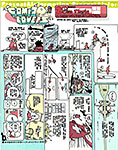

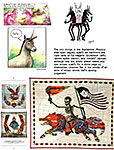
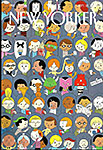
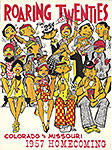
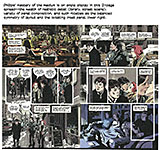
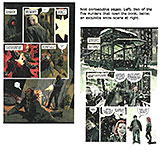
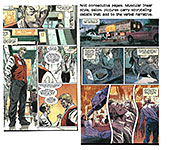
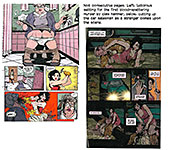
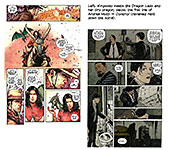
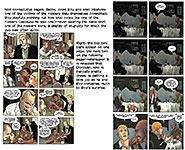
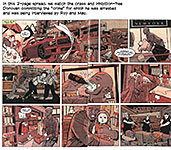

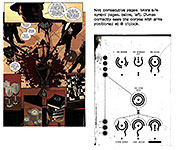
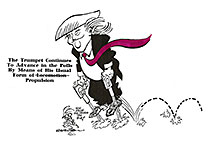

1.jpg)
1a.jpg)
2.jpg)
3.jpg)
4.jpg)
5.jpg)
6.jpg)
7.jpg)
8.jpg)
9.jpg)
10.jpg)
11.jpg)
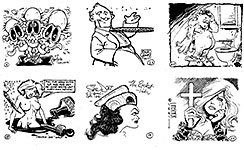
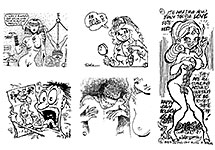


1.jpg)
2.jpg)
3.jpg)
4.jpg)
5.jpg)
